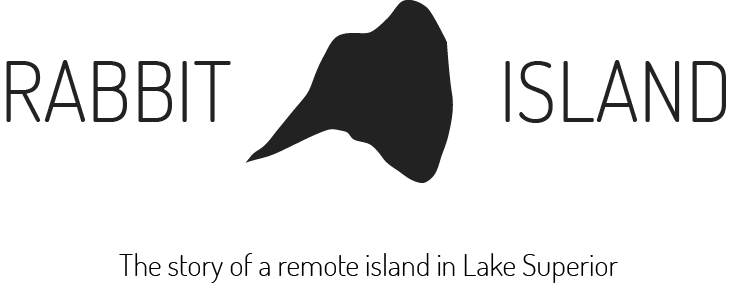Congratulations 2025 Residents
The Rabbit Island Residency is pleased to announce the selection of three residencies for its 2025 program. Each residency will be supported by an unrestricted honorarium of $4,000 USD, made possible by generous grant funding including a Core Grant from Ruth Arts, and donor contributions.
Kara Lynn Bressler
Anastasiya Tarasenko & Alexander Costa
Dayton Hare
Below we share the brief biographies, along with the artist statements and residency proposals from the residents' applications. We acknowledge that proposal ideas may evolve as the residents experience life and work on the island. We look forward to working with the residents, sharing their experiences on the island, and expanding the story of Rabbit Island through their research and work.
Since its inception in 2011, the Rabbit Island Residency has supported the 48 residents and over 90 collaborators. These residencies have resulted in a diverse range of artistic expressions that critically engage with issues of conservation, culture, and our relationship with the natural world. We are confident that this year's residents will continue this tradition and contribute valuable perspectives to these ongoing dialogues.
The selection committee extends its sincere gratitude to all who applied to the 2025 Rabbit Island Residency program. The pool of applicants was exceptional, and while we regret not being able to offer additional residencies, we are honored to be welcoming and working with Kara Lynn, Anastasiya and Alexander, and Dayton this summer.
Rabbit Island 2025 Residency Selection Committee
Ale de la Puente, 2024 Resident, Artist
Tanja Geis, Artist/Curator
Dehlia Hannah, Curator/Writer
Kelsey Issel, Curator/Producer
Rob Gorski, Cofounder/President
Andrew Ranville, Cofounder/Director, Artist
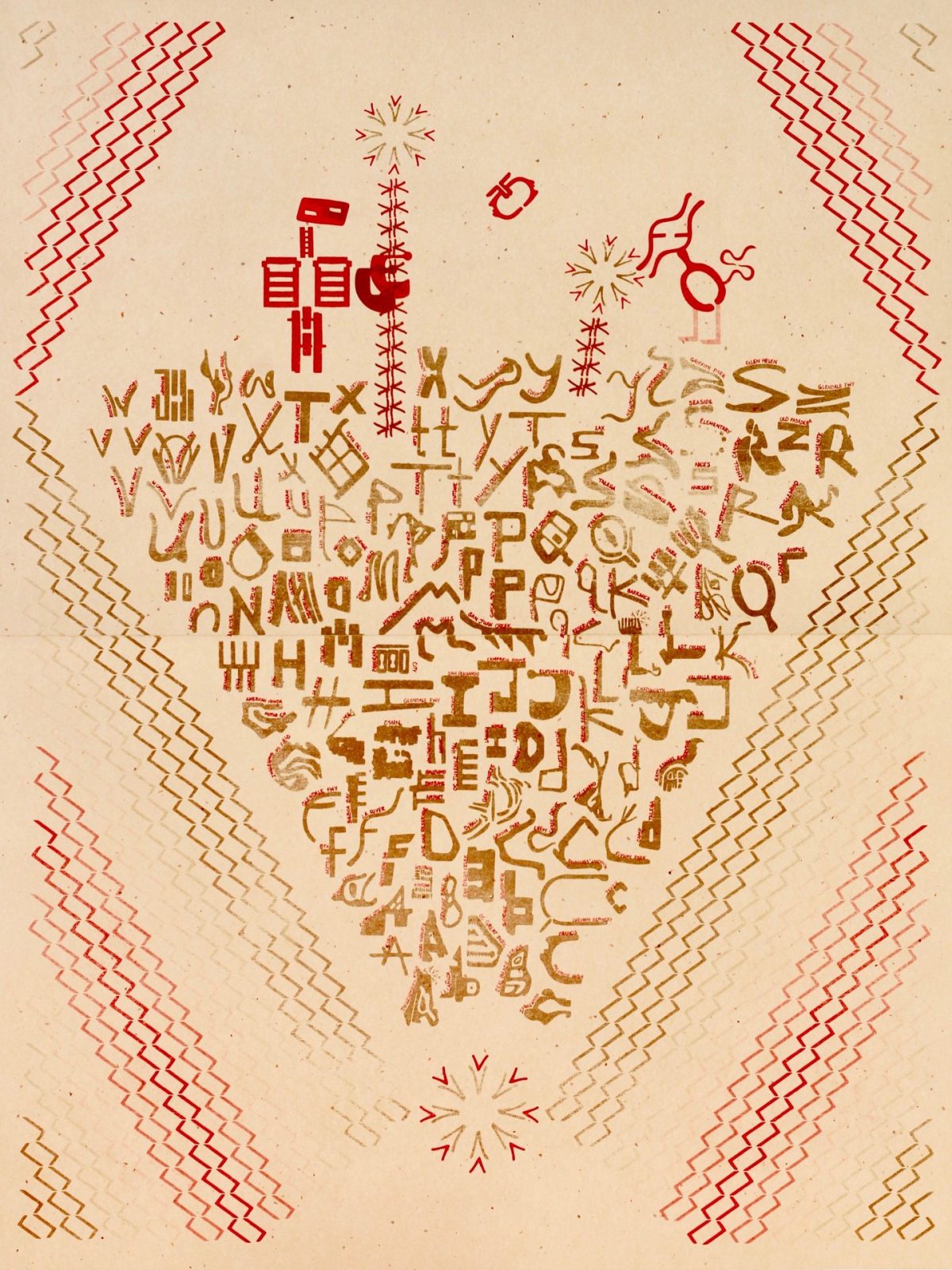
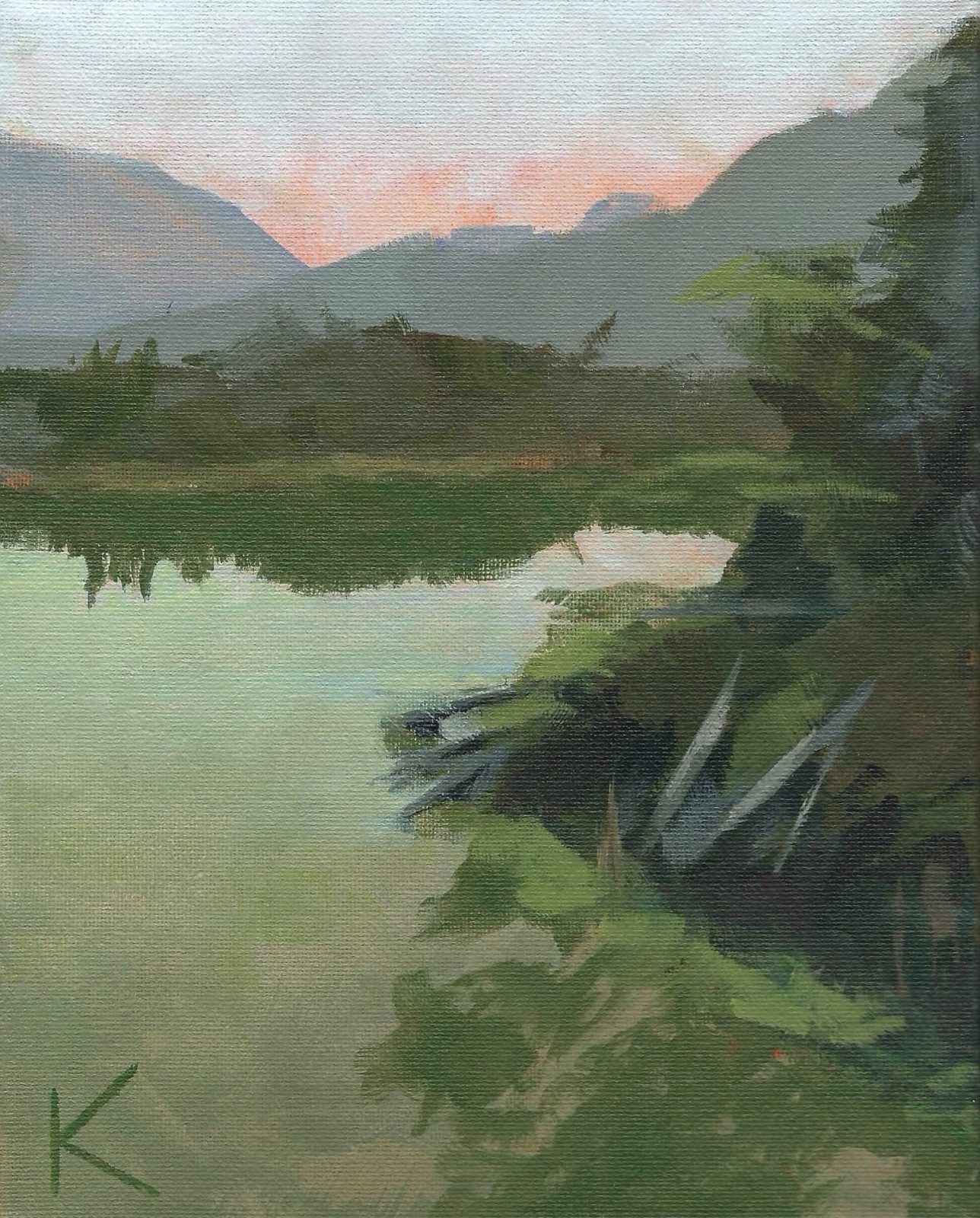
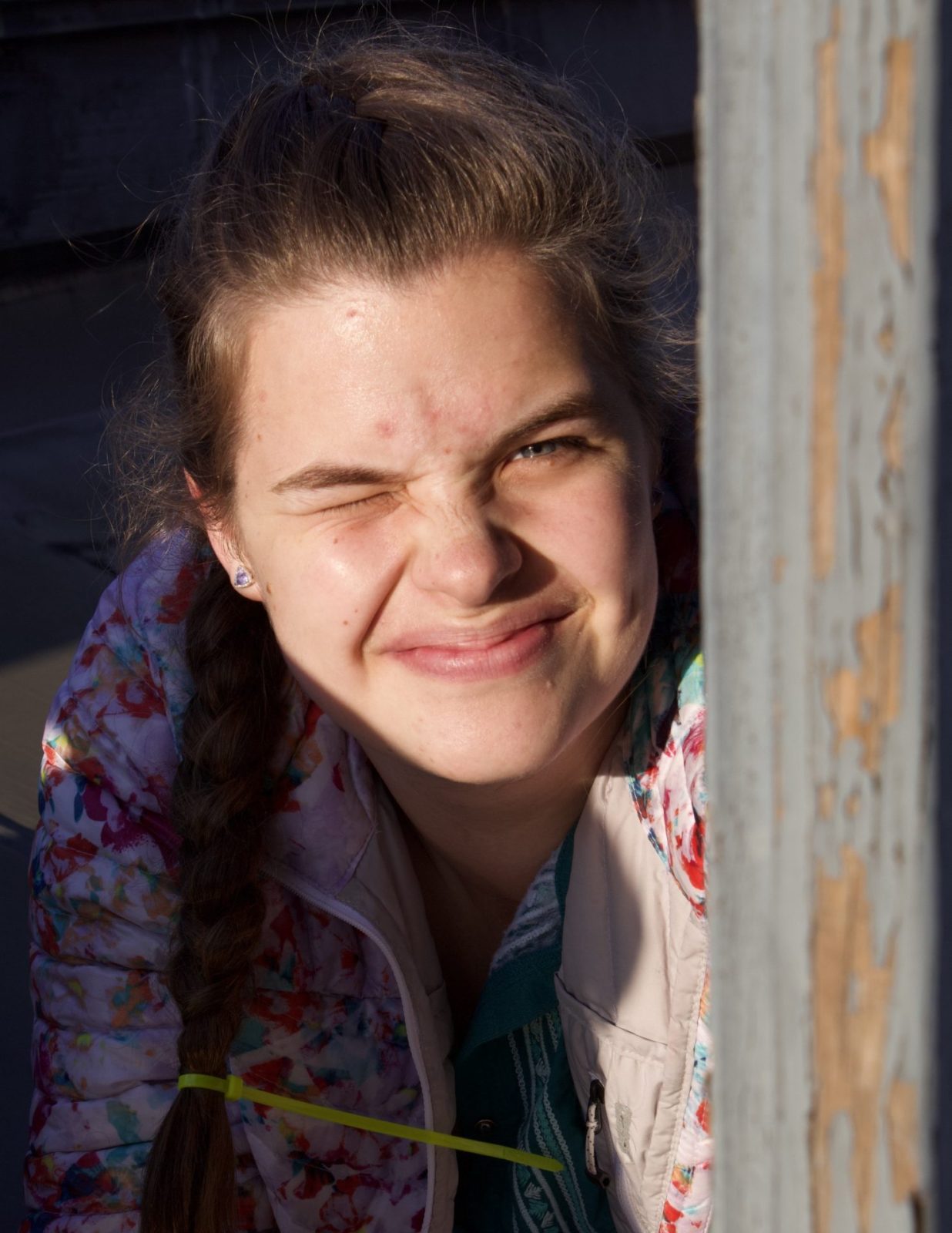
Kara Lynn Bressler
Biography
Kara Lynn Bressler is a listener, light observer, geo-typographer, outdoor educator, technologist, and visual artist. Kara grew up in Southwest Florida and currently lives in Los Angeles, California, where she works as an animation lighting artist for feature films like The Wild Robot while running her own multimedia art practice, collaborating on font-based research with interdisciplinary researchers including members of the Utah Diné Bikéyah, Lassen Volcanic National Park, The Brooklyn Rail, and MIT Media Lab.
Kara holds a Bachelor of Science degree in Engineering, Computer Science & Visual Arts from Princeton University, where she also worked as a Leader Trainer and Outdoor Educator for Outdoor Action.
Artist Statement
I often think about the elements of language—internally playing with letters and phrases, scanning my physical world for glyphs. My continued research practice of Topography Typography involves glyph detection and typeface creation from physical spaces, ultimately creating place-based fonts. It is my intent with these fonts to keep elements of the physical landscape in the text’s textural experience.
I enjoy watching light. My perception of light shapes my everyday perspectives and helps me feel grounded. I’ve trained my eye to focus on small details: light traveling through water creates dancing caustic envelopes, light hitting building windows creates warped reflections, and light piercing into internal spaces creates graphic shards. These moments are art. I plein air paint to watch how light affects value, composition, and mood while I connect with nature and my local community.
These graphic languages—of typography, of light—keep me searching. Using these languages to help me focus, I dive into intersections of nature, computer graphics, graphic design theory, and experiential education. I’m interested in examining visual and media theoretical patterns while locating and emphasizing poetic moments.
Proposal
For my artist residency, I propose a typographic exploration of Rabbit Island which likely includes:
(1) the completed Rabbit Island font,
(2) an abstract typographic map of the island,
(3) a daily routine of light observation, and
(4) a design for a postcard accordion book.
My continued Topography Typography practice has often used satellite imagery as a starting dataset from which I identify and curate geographic glyphs (geoglyphs) to form the basics of language for my place-based fonts. Often, the geoglyph boundaries I find are formed by human infrastructure.
On Rabbit Island, I would like to take the chance to find the elements of language in a place without these artificial boundaries. While I may still use satellite imagery to inform my search, I would like to find my typographic shapes in-person, in-situ, and on the ground. While on the island, I’ll curate a batch of found letterforms formed by local nature and light. I’ll create a plein air study at the location of each geoglyph, twenty-six in total, one for each letter in the alphabet.
These studies will end up taking the form of a postcard accordion which will also include a collection of my written thoughts about light—from personal, historical, and scientific perspectives—typeset in Rabbit Island. By the end of the residency, I’ll have a prototype design for the postcard accordion with the intention to print and circulate the small book after the residency. Keeping an element of the referent landscape in the visual building blocks of language, the Rabbit Island font will allow this space’s unique topography to remain at the center of the published message.
By examining this landscape through the lens of the basics of language, I hope to build paths for folks to reflect on the importance of deep observation, nature conservation, and land stewardship.
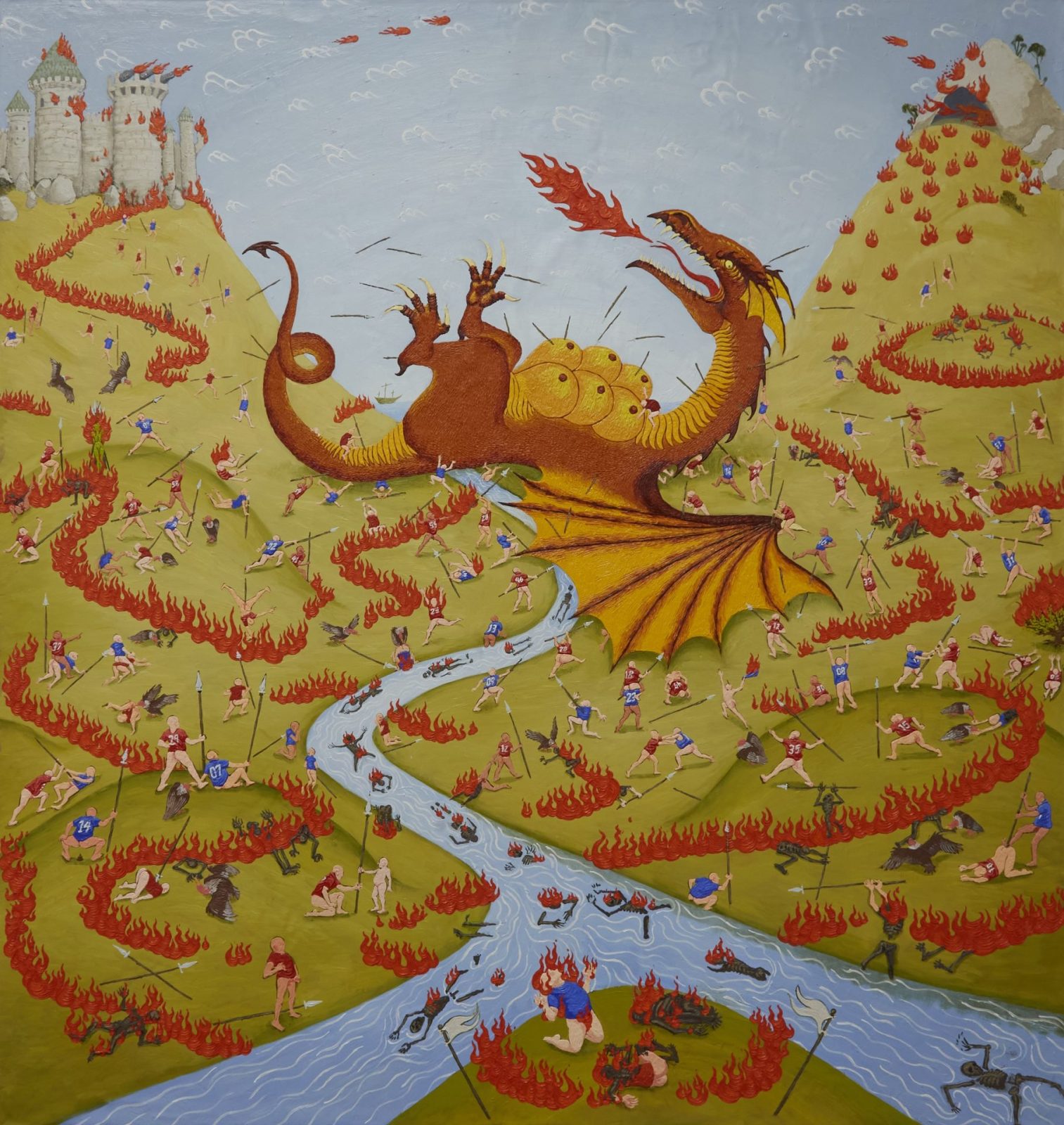
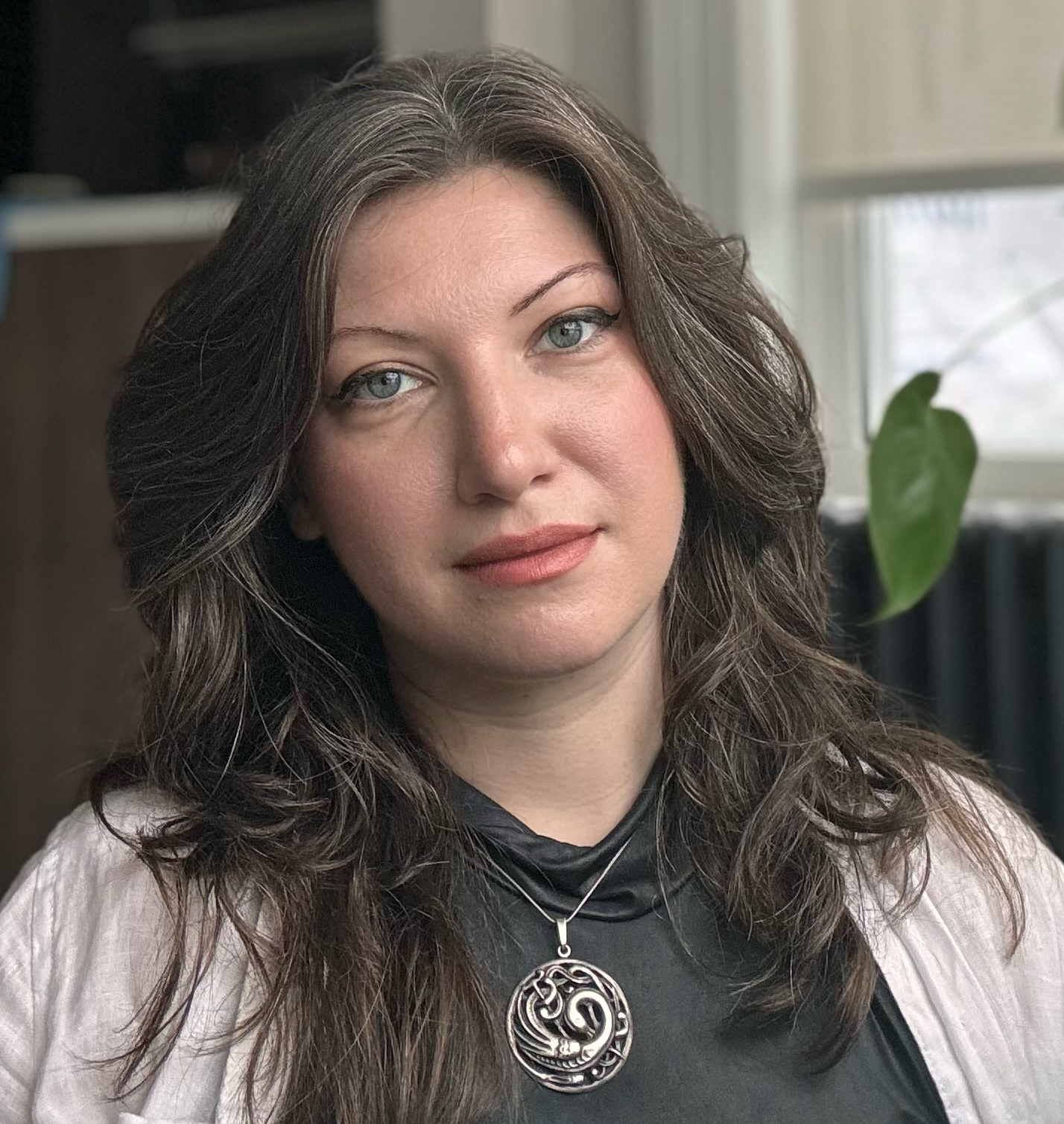

Anastasiya Tarasenko & Alexander Costa
Biography
Anastasiya Tarasenko is a painter based in New York City. She was born in the former Soviet Union, Ukraine, in 1989. Her family moved to the United States in the mid-90s. Anastasiya's collaborator, Alexander Costa, was born in Queens, New York, in 1987. He is Anastasiya's partner in life and muse. Alexander is a retired ballroom dancer and is a continual source of inspiration for Anastasiya, helping her generate complex poses and ideas for her paintings.
Anastasiya holds a MFA from the New York Academy of Art; has received international awards and residencies from 2016–present; been featured in numerous publications; exhibited internationally in group shows; and has had several solo exhibitions of her work in New York City and Boston.
Artist Statement
My work is at the intersection of my identities as an American, a Ukrainian immigrant, a Jew, and a queer woman storyteller. In my most recent body of work, and my work in general, can be best described as a form of complex world building. Dozens of small narratives are combined on a single panel to form a grand, gods-eye view.
From a physical standpoint: they are highly textured oil paintings; touchable. They are precise yet reductive. I have resurrected an old painting medium, copper, which was used hundreds of years ago. Through it, I am able to achieve an enameled look with the paint while the visuals pay homage to medieval and renaissance imagery and motifs.
I take my time, I start with a sweeping landscape, or seascape. I paint my cast of characters like a director directing a play. They interact, often in unsettling ways, with each other and their environment. They laugh, they kill, they eat, they die. It is often difficult to distinguish any protagonists. Indeed, as in real life, there rarely are any.
Essentially, my paintings are a critical reflection of contemporary culture as it intersects with the universal and constant truths about the darker side of human nature. I use details of humor and whimsy, bodily function in all its ugliness. Taking a closer look is rarely boring. By combining ancient themes with contemporary ones, I strive to reinforce that history is always with us and within us. What drives us forward? What holds us back? And in what ways do we remain distinctly animal?
Proposal
I was born and raised in the cities, as far removed from nature as one can be. My world has been one of concrete, fences, clear delineations of where to go and what to do. I am both in fear and in awe of being alone in a place where no such clean distinctions exist. From my perspective, nature is a concept, one that I explore now in my paintings. It is precisely the tension between the “civilized” man and his animal nature that I find fascinating. Our bodies and minds evolved in the untamed wilderness and now we find ourselves within the confines of square walls physically, psychologically and socially. These thoughts have formed the basis of my art practice at its core. There is symbiosis and there is a war within us. We take advantage of nature’s gifts as we shirk our responsibility to maintain its equilibrium. Humanity feels like a swelling virus at times, seeping into every corner, turning over every stone on our planet in search of what it would benefit us. In my painting, St Georges vs. The Dragon, nature is represented by a great dragon being taken down by small, insect-like humans; swarming and taking her down. But it is to their detriment. The fire engulfs them too.
I operate under the greater historical context of painting. Landscape painting has always been a fascination to me, particularly because it encapsulates that which cannot be contained, nature itself. And then it is hung on the square walls of a private home, grand castle or museum. It’s as if both the painter and patron can say they have captured the sublime. An artist can spend a lifetime on this endeavor, collecting the sublime moments of nature, or at least attempting to. And I too have this same yearning, with magic both in the observation and the translation.
Alone on an island, although with everything equipped for my survival, still means a profound solitude in an environment that is merely hosting me like a small, fleeting insect. I am there and then I am not. What does it matter to the trees? To the water? And yet, the position there does present a rippling impact on everything around me. The leaves I displace by my footsteps, the dirty water I leave behind after showering, and even the traveling I do to get there is not without impact.
On Rabbit Island, I will immerse myself in painting scenes of man in nature, with my partner, Alexander Costa, playing the part of my model and muse. The traditional job of the muse is to be observed in the hopes that inspiration will follow. I will document him in a series of drawings and paintings one normally associates with civil, polite studio painting. Except this man is in the wild, in his ancestral environment, or at least attempting to be with a certain kind narrative, theatrical and humorous flair my art generally embodies. Much like most people in contemporary society, here is a man that enjoys nature but never gets to immerse himself in it. Well here is his chance; and I will be in the woods observing like David Attenborough except with a sketchbook and not a camera.
I will also write extensively to elaborate on my thoughts of this interplay. I imagine a whole body of work that contemplates the human position in a vast world in which they both belong and accept and yet fear and reject; one which profoundly overpowers them and yet serves as a mere backdrop for their self discovery.
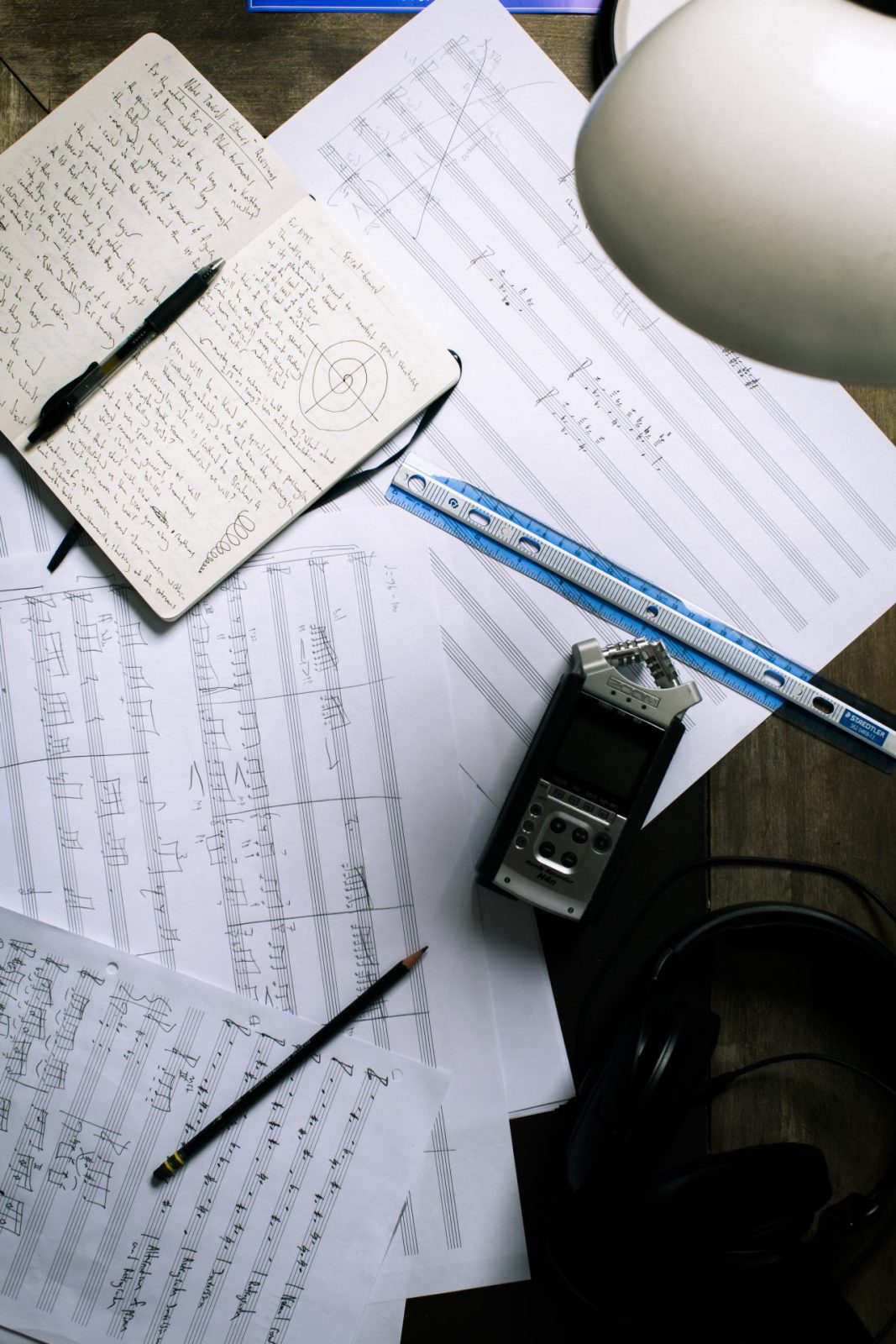
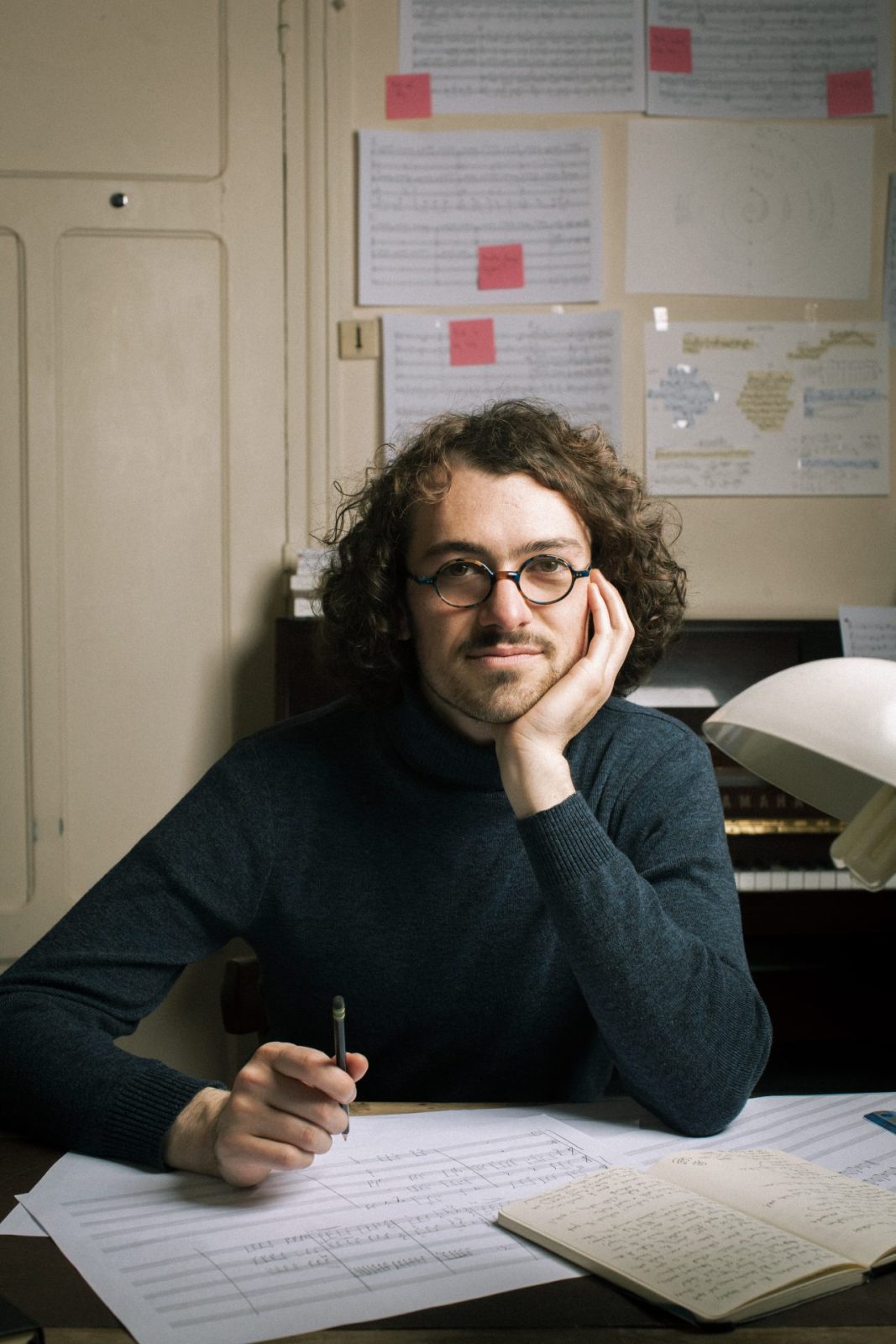
Dayton Hare
Biography
Dayton Hare is a composer from Colorado who often draws inspiration from elements of the natural world around him, striking a balance between narrative and atmosphere. In his work, he hopes to raise questions about our relationship to our environment, elevate under-appreciated beauty found around us, and explore the blurry lines of perception. Commissioned by ensembles such as the New York Youth Symphony, Interlochen Center for the Arts, and the Norfolk Chamber Choir, his “highly textured” (EarRelevant) music has been performed at venues such as Carnegie Hall, Hill Auditorium, Woolsey Hall, the Salle Cortot, and more. He has been programmed by groups including the Utari Duo, Mammoth Trio, Bent Frequency, Ensemble Variances, Yale Percussion Group, and others.
Currently a Paris-based Fulbright scholar and composer-in-residence at the Fondation des États-Unis, he is an advanced student at the École Normale de Musique de Paris, and previously earned his master’s degree in Music Composition from the Yale School of Music and bachelor’s degrees in Composition and English literature from the University of Michigan. He has received fellowships from the Fulbright Program, the National Orchestral Institute + Festival, the Conservatoire américain de Fontainebleau, and the Norfolk New Music Workshop, and won competitions including the Jon Deak First Music Competition and the RED NOTE competition.
Outside of music, Dayton has also worked extensively as a journalist, and served as the newsletter editor of the Ann Arbor Observer and the managing editor of the Michigan Daily, where was also the classical music columnist. As a critic, he primarily covered the contemporary music scene of southeast Michigan.
Artist Statement
While my artistic identity is multifaceted, at the heart of my work lies a deep concern for the natural world and a commitment to using music to promote positive change in the ecological realm. In my music I often try to capture small, fleeting moments of natural beauty that, to me, take on outsized significance, both for their own sake and for nature’s vulnerability in the face of anthropogenic environmental threats such as climate change. I view my portrayal of these moments as an attempt at a kind of consciousness-raising, as a framing device meant to focus the listener’s attention on the importance of things taken for granted. Things as simple as the interplay of light over a lake, or the lonely singing of dawn’s first birds, or the course of an endangered river, or the torrential rain over a barren landscape — all of these are precious, and my portrayal of them is often suffused with a quiet grief for the vanishing of a world rapidly slipping away. Through this portrayal I hope to gently refocus people’s attention towards our slow-motion ecological catastrophe, to stir them to the realization of the preciousness of these moments, to the realization that a world composed of them deserves to be protected. By calling attention to these taken-for-granted things, the things we stand to lose, I hope my art can make some small contribution to a sustainable future.
Proposal
According to the Audubon Society, bird populations of the Great Lakes region are particularly vulnerable to climate change, which is why I want to immerse myself in their sonic world during the Rabbit Island residency. Drawing from the island’s soundscape—composed of both birdsong and other natural elements—I will compose a piece that serves as a portrait of this particular place and moment in time, thereby preserving an artistic record of what may turn out to be, due to human mismanagement of the Earth, an evanescent phenomenon.
First, I will take recordings of the environment itself during the residency; second, I will compose music primarily for woodwind instruments in response to this environment. These two types of material would then be overlayed and interlaced. I will write material that reacts to bird calls without merely copying them, by using their underlying musical logic to invent new music, and by translating avian behaviors such as flocking or murmurations into musical gestures. In addition, I would unravel the temporal rigidity of traditional rhythmic relationships in notated music by employing aleatoric elements, bringing the composed material closer to sound textures found in nature.
But the most important element of the piece would be the way in which it treats the natural environment as a co-equal collaborative partner. Questions of both form and content won’t always be settled by the grand design of a composer but by natural occurrences during the time of the residency. To me, this relinquishing of artistic choice raises important questions of agency and control, highlighting the ways in which humanity is dependent on the conditions of the natural world, and how our own decisions are contingent upon particular kinds of relationships with the biosphere.
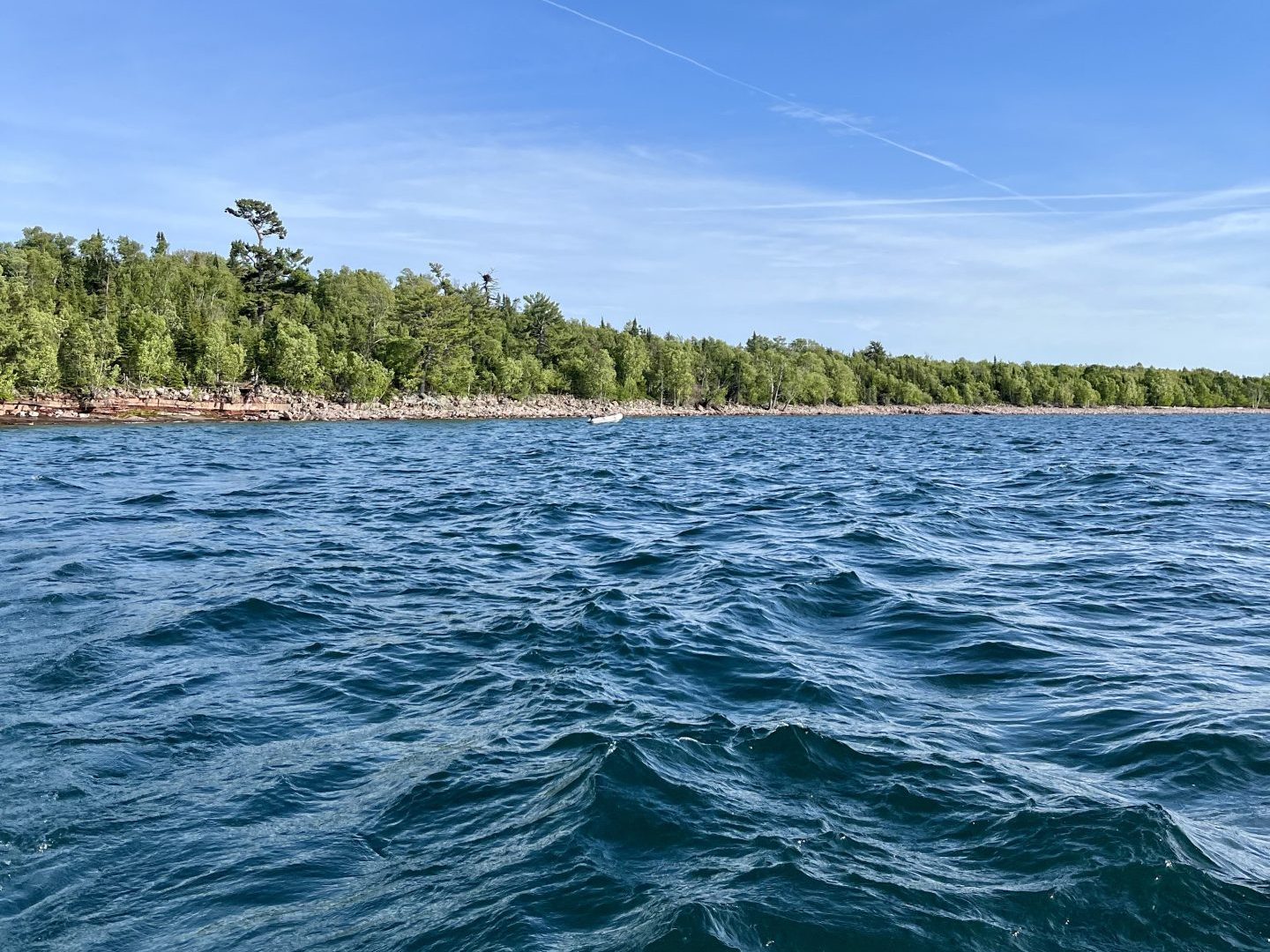
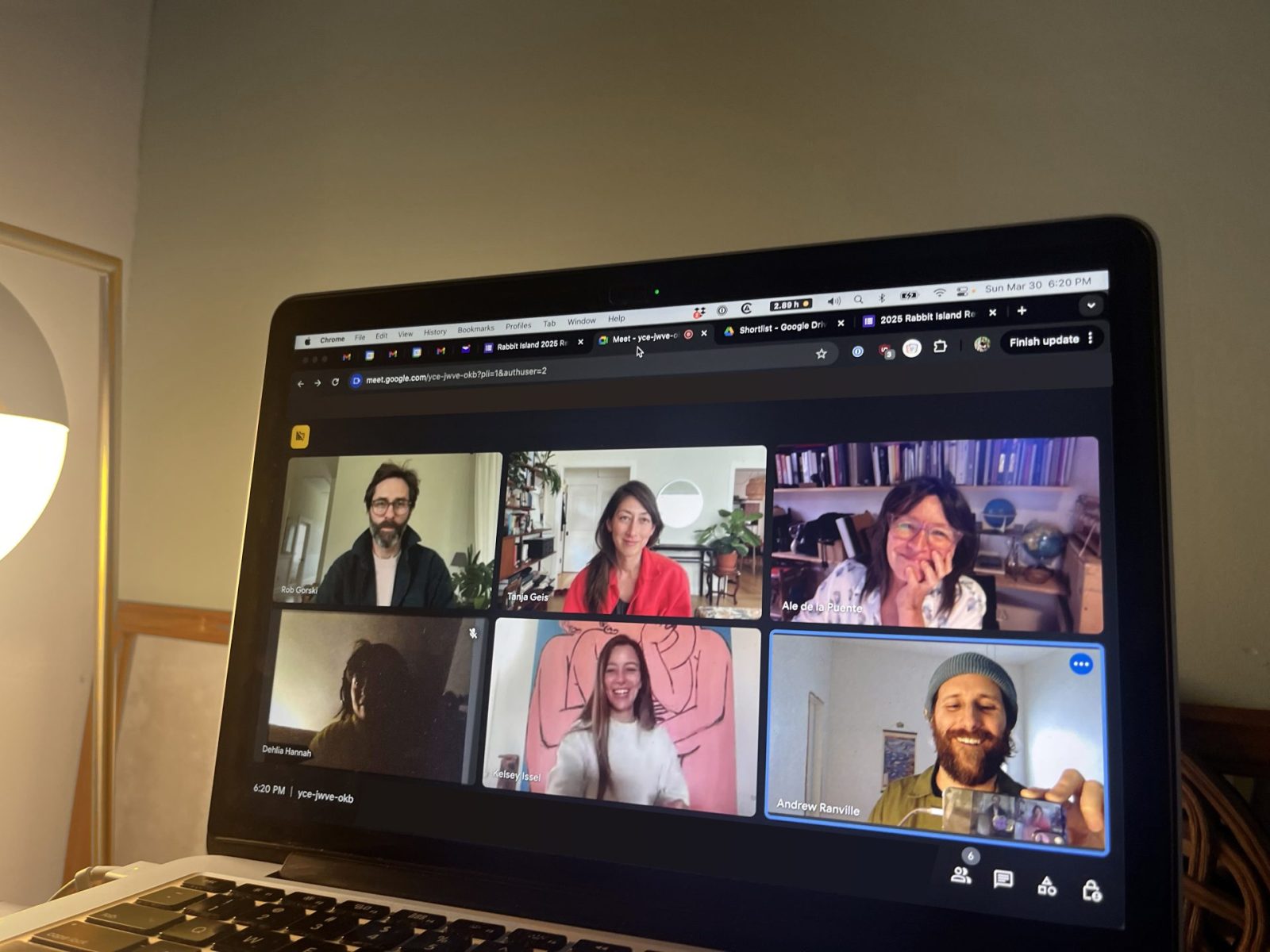
About the Rabbit Island 2025 Residency Selection Process
Following the application deadline all 255 applications were made available for review to the six member Selection Committee. Each member was given approximately 42 applications to be lead reviewer on, while all applications were made available for review by the entire committee. From March 2 – 29, 2025, members of the Selection Committee reviewed all 255 applications in detail. Together they read each artist statement and proposal, reviewed the work samples, and visited the links provided in each submission. At the end of this first round of review, an initial shortlist of 46 exemplary applications was created.
These 46 shortlisted applications were compiled for the Selection Committee to review, with the opportunity to add any other applications they thought needed a closer look. Over the course of several hours the committee met virtually to collectively review the shortlisted applications. At the end of their discussion each member voted for the 10 applications they felt were the strongest. These votes were tallied and a finalist list of 10 were chosen. The 10 finalists were interviewed. After the interview process and continued deliberation and discussion, each committee member voted, and the top three applications were awarded a 2025 Rabbit Island Residency. The awarded residencies will be announced by the end of April, 2025.
Rabbit Island 2025 Residency Selection Committee
Ale de la Puente, 2024 Resident, Artist
Tanja Geis, Artist/Curator
Dehlia Hannah, Curator/Writer
Kelsey Issel, Curator/Producer
Rob Gorski, Cofounder/President
Andrew Ranville, Cofounder/Director, Artist
Congratulations 2024 Residents
The Rabbit Island Residency is pleased to announce the selection of three artists for its 2024 program. Each residency will be supported by an unrestricted honorarium of $3,300 USD, made possible by generous grant funding and donor contributions.
Ale de la Puente
Alyssa Songsiridej
Moheb Soliman
To provide insight into the quality and ambition of the proposals received, we are sharing brief biographies of each, along with the artist statements and residency proposals from the residents' applications. We acknowledge that proposal ideas may evolve as the residents experience life and work on the island. We look forward to following their artistic journeys and sharing their research and work throughout the program season.
Since its inception in 2011, the Rabbit Island Residency has supported the creative endeavors of 45 residents and over 90 collaborators. These residencies have resulted in a diverse range of artistic expressions that critically engage with issues of conservation, culture, and our relationship with the natural world. We are confident that this year's residents will continue this tradition and contribute valuable perspectives to these ongoing dialogues.
The selection committee extends its sincere gratitude to all who applied to the 2024 Rabbit Island Residency program. The pool of applicants was exceptional, and while we regret not being able to offer residencies to all, we are honored to be welcoming and working with Ale, Alyssa, and Moheb this summer.
Rabbit Island 2024 Residency Selection Committee
Beau Carey, 2015 Resident, Artist
Claudia O'Steen, 2021–22 Resident, Artist
Juliana Cerqueira Leite, 2020 Visitor, Artist
Kelly Gregory, 2016 Resident, Architect/Artist
Lucía Hinojosa Gaxiola, 2021–22 Resident, Artist
Rob Gorski, Cofounder/President
Andrew Ranville, Cofounder/Director, Artist
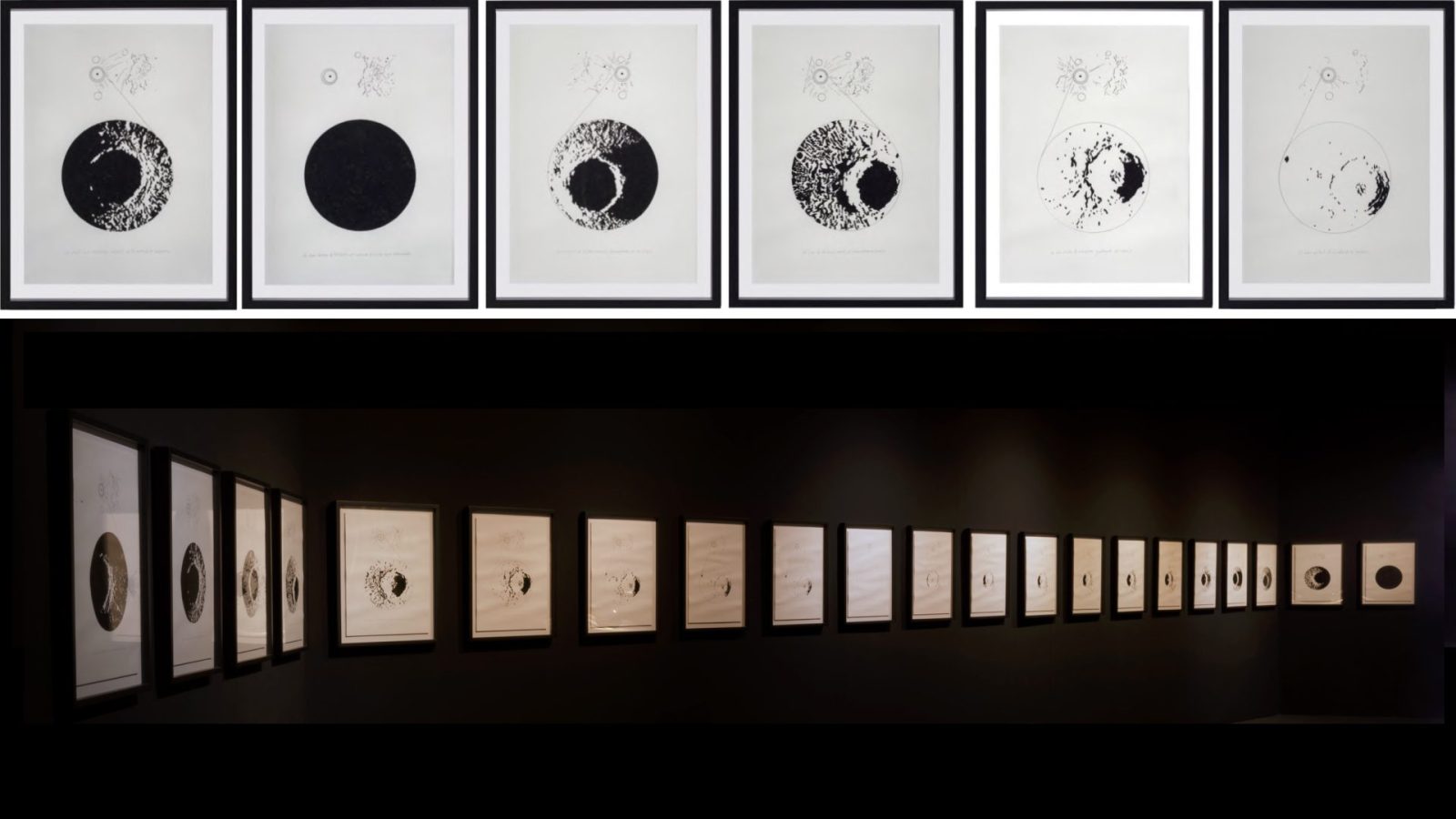
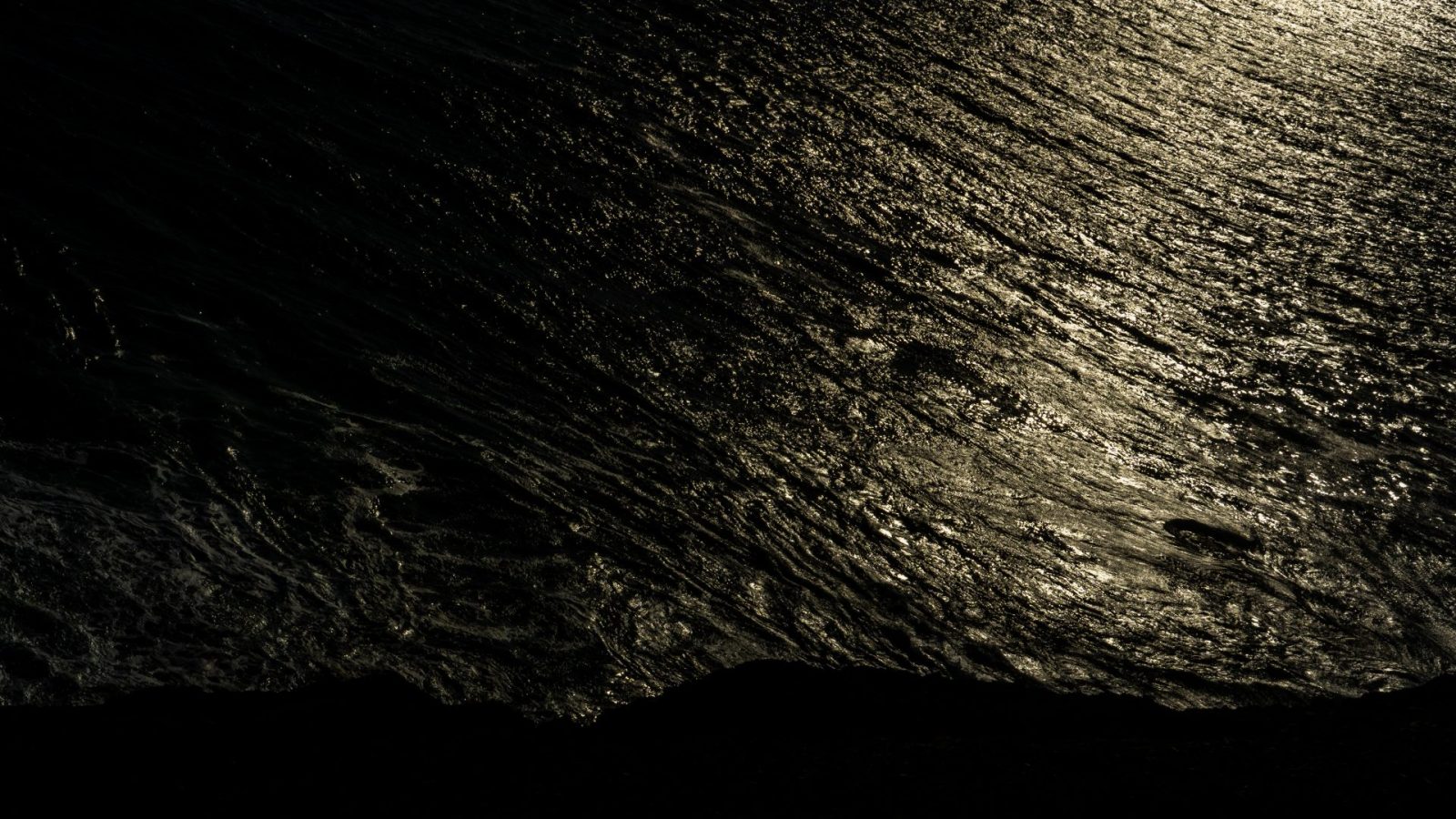
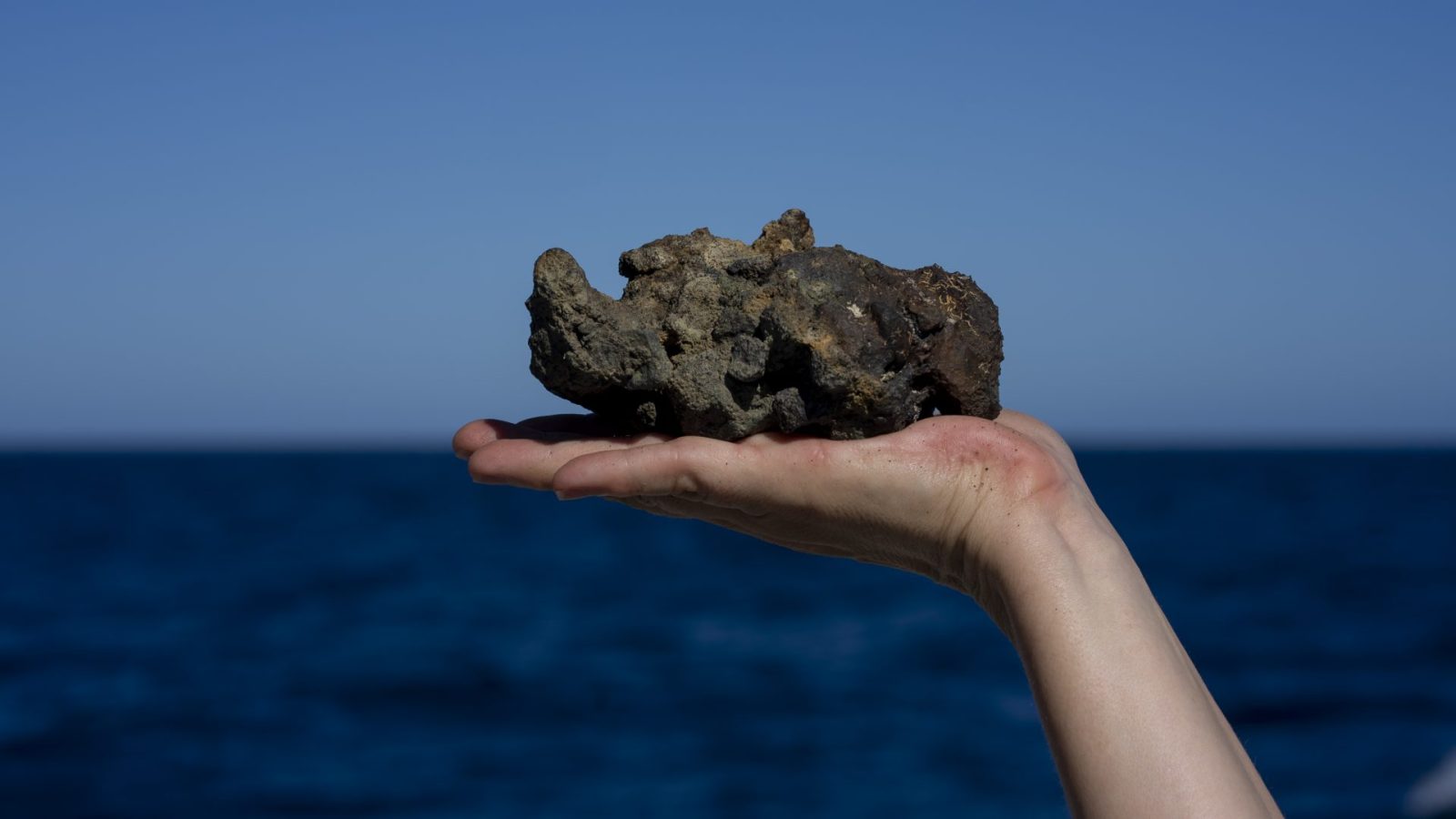
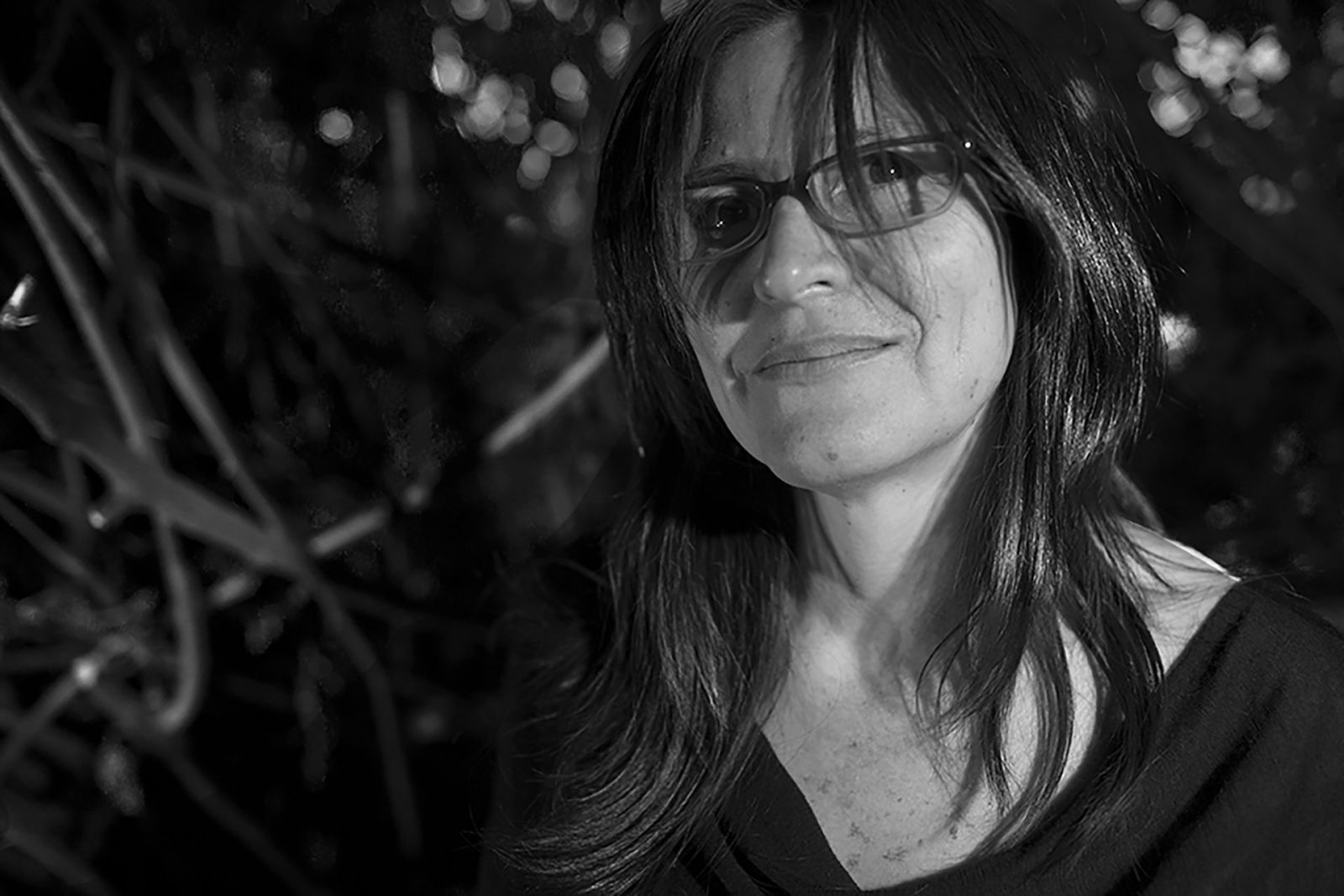
Ale de la Puente
Biography
Ale de la Puente’s work deals with notions of time-space and memory through a continuous construction of poetic relations between experiences given by space and time from a technological, scientific, philosophical, to linguistic approach.
Ale's diverse background (industrial design, goldsmith, boatbuilding) and interests in concepts of time and space have lead her to collaborate with researchers working in various fields—from hypnotism, astronomy, and nuclear physics, to meteorology and mathematics. Ale has collaborated with scientists in the realization of her work, and has developed art projects with the Institute of Astronomy and Nuclear Sciences (UNAM, Mexico), the European Center for Nuclear Research (Geneva, Switzerland), the Roscosmos State Space Corporation (Moscow, Russia) and the Kosmica Institute (Berlin, Germany).
Among other distinctions, Ale has been a fellow of Mexico's National System of Creators twice, has obtained an Honorable Mention at Collide@CERN Ars Electronica in 2013, received the Visual Arts Award of the SIVAM Foundation in 2006, and received a fellowship Pollock-Krasner Fellowship (1999-2000). During 2021, she participated in Artists@Sea, a scientific research expedition of the seabed in the Gulf of California aboard the ship FALKOR, an initiative of the Schmidt Ocean Institute. Ale exhibits work nationally and internationally, and is featured in several public and private collections.
Ale is based in Mexico City, Mexico.
Artist Statement
I am interested in poetic and conceptual explorations of time and space across a wide range of mediums, from installations and sculptures to drawings, photography, music, performance, and video. This includes art-science expeditions in search of symbolic natural phenomena, how we signify them, and how we relate to the given meaning. As an artist, I deal with questions that concern scientists and philosophers alike. I am interested in diverse cultural and social contexts informed by past and present events as well as our imagined or expected future events.
Collaborations with diverse disciplines and professions have nurtured my work, but the intimate act of observation is also a central activity in my creative process; this is how I ask myself about what coincides—near, far, and in movement—about points of view and about what coexists beyond space-time. I am interested in how technology, language, culture, history, etc., has affected our perception of time and space and our relationship with nature, even though our presence here is still limited by time and space.
Proposal
It goes like this: ___ Do you know the song?
My proposal during my residency is to create a score that captures a brief fragment of Rabbit Island's existence.
Each place has its own song, a symphony of the rhythms given by nature. The basic pace of everywhere on Earth is the moon cycle, the Sun, solstices, and equinoxes. Then, the distinction of each place is given by its meteorology due to the territory's qualities, followed by fauna and flora. Throughout time, years, and centuries, the rhythms of nature have changed. Our ancestors had observed and registered nature as a necessary act of survival. Observing the rhythms that repeated and the exceptional events of each year, they found the basis for our knowledge of nature. In the beginning, it could have been cave paintings, stone carvings, totems, songs, myths, storytelling, the way human beings create a memory of the natural rhythms, then (you know the history). And now, as a society, our central relationship with nature is data.
I propose to observe and create a notation of everything that happens, moves, changes, or stays still on Rabbit Island and what my senses can reach. I will work with sunrise, sunset, and the moon as a rhythm (I chose the dates that include nearly the time between full and new moons).
The artwork will be a notation of the changing skies, clouds and winds, light colors, sounds, and fauna and flora's presence and behavior, from leaf fall to insect call.
I foresee an artwork that involves a contemporary score made out of drawings, possibly by objects (sculptures) that musicians or singers could perform. The specific time of the residence score and the imagined one of its origins and becoming. Other possible outcomes include a performance, an artist's book, storytelling, or other media.

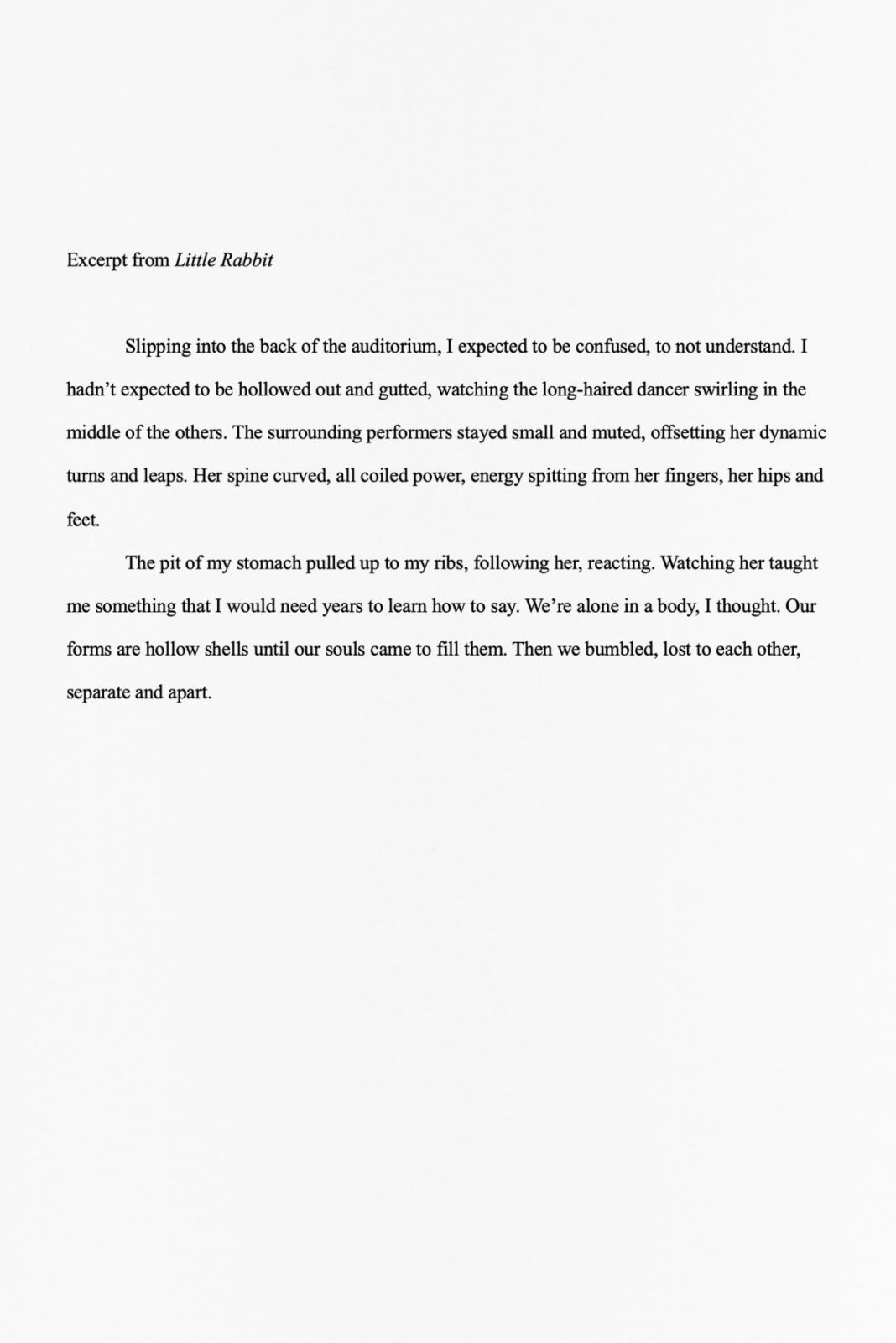
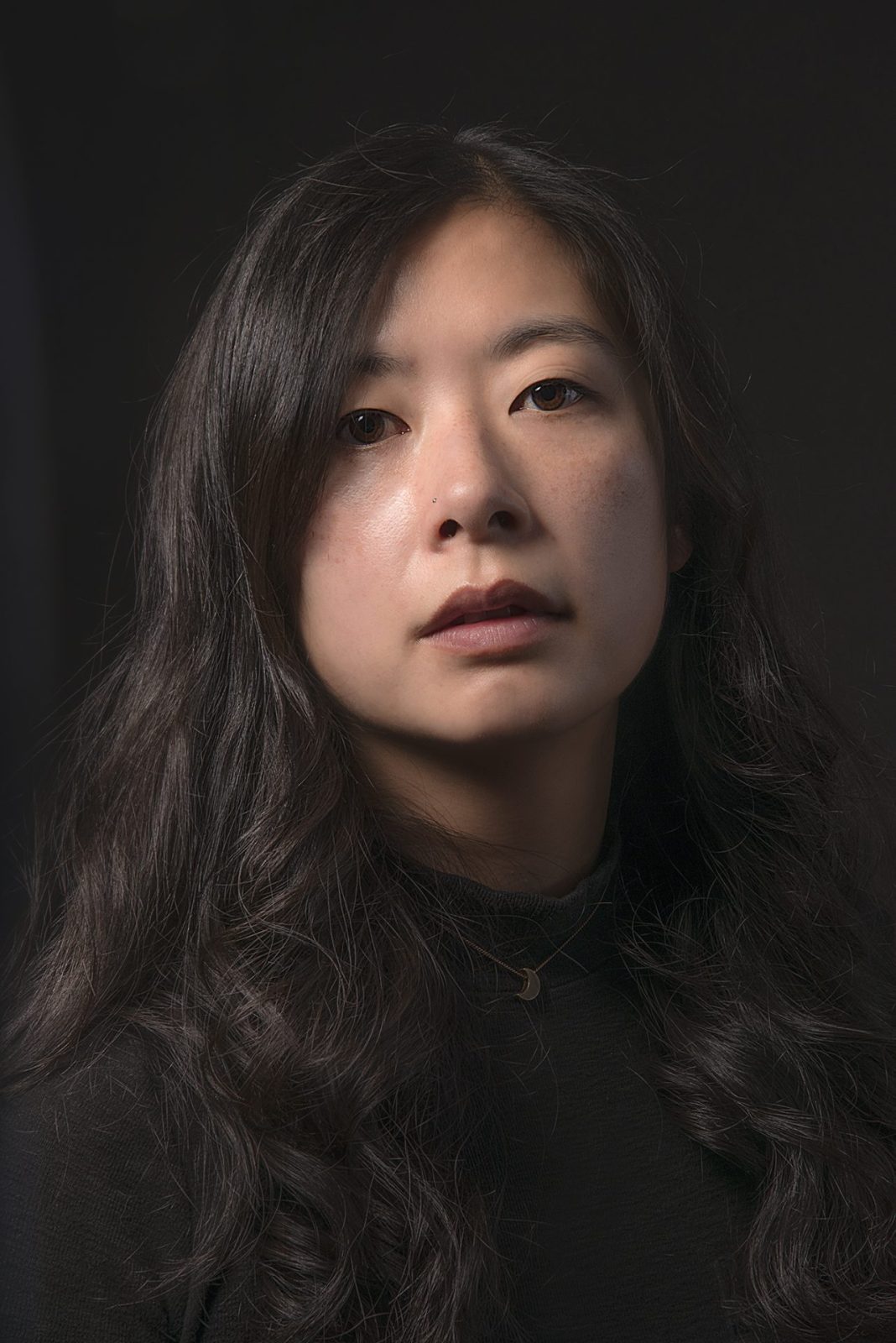
Alyssa Songsiridej
Biography
Alyssa Songsiridej is the author of Little Rabbit, shortlisted for the Center for Fiction First Novel Prize and a finalist for the PEN/Hemingway Award and the Edmund White Award. She is also a 2022 5 under 35 National Book Foundation honoree, and lives in Philadelphia.
Artist Statement
I’m a fiction writer interested in the mutability and strangeness of identity, particularly as it intersects with culture over time. My work explores how the self is influenced by society and the environment. I am particularly interested in the embodied experiences of women, typically Asian American bisexual women who exist on the fault lines of different identities. For example, my first novel, Little Rabbit, follows a young queer writer as she embarks on an intense affair with an older male choreographer, exploring the challenges and complications of making art under capitalism. Recently, as my peers and I grapple with parenthood under climate catastrophe, my interest has grown to include our role as human animals, and our obligations and responsibilities to each other and the planet. My new project explores a woman’s experience of pregnancy in an accelerating moment of climate change on remote and increasingly dangerous island off the coast of southern New England.
Proposal
My project is from the point of view of a pregnant woman who has fled her marriage for a remote island, which increasingly becomes its own active character in the novel. My experience on Rabbit Island will give me the critical sensory details and experience needed for this aspect of the work. The rough outline of my project concerns Tesa, who at age 37 becomes unexpectedly pregnant. Because her husband is morally opposed to having children due to climate change, she avoids telling him and instead moves with her friends to the aforementioned island.
The goal of this work is to depict climate change in a realist mode, rather than a speculative or “cli-fi” lens. I’m highly influenced by Amitav Ghosh’s 2015 book, The Great Derangement, which argues that modern literary novels are built on improbable but believable human actions, instead of the probable but unbelievable transformations of the natural world. This focus on the individual limits the novel's ability to address the broad societal upheavals caused by a warming atmosphere.
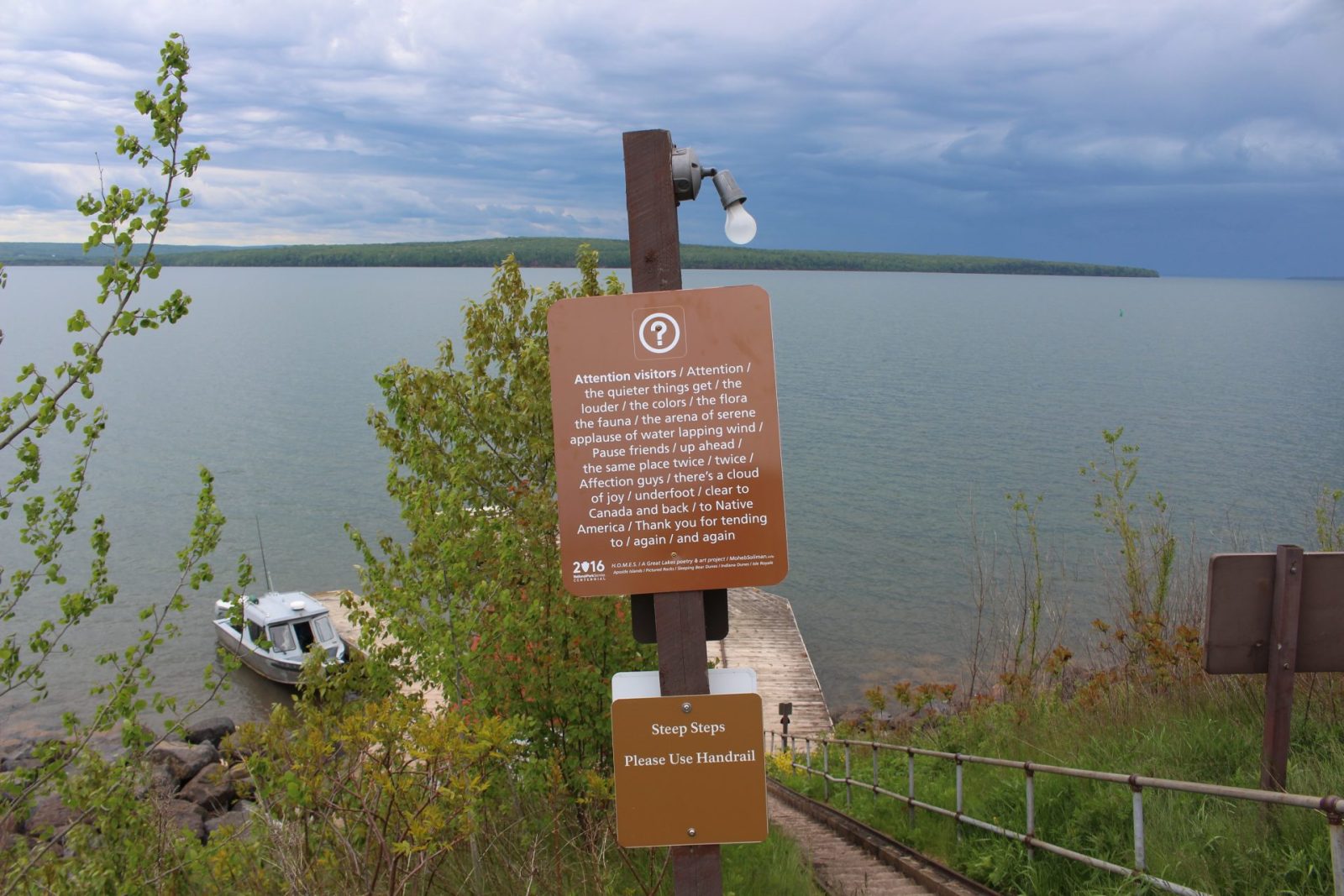
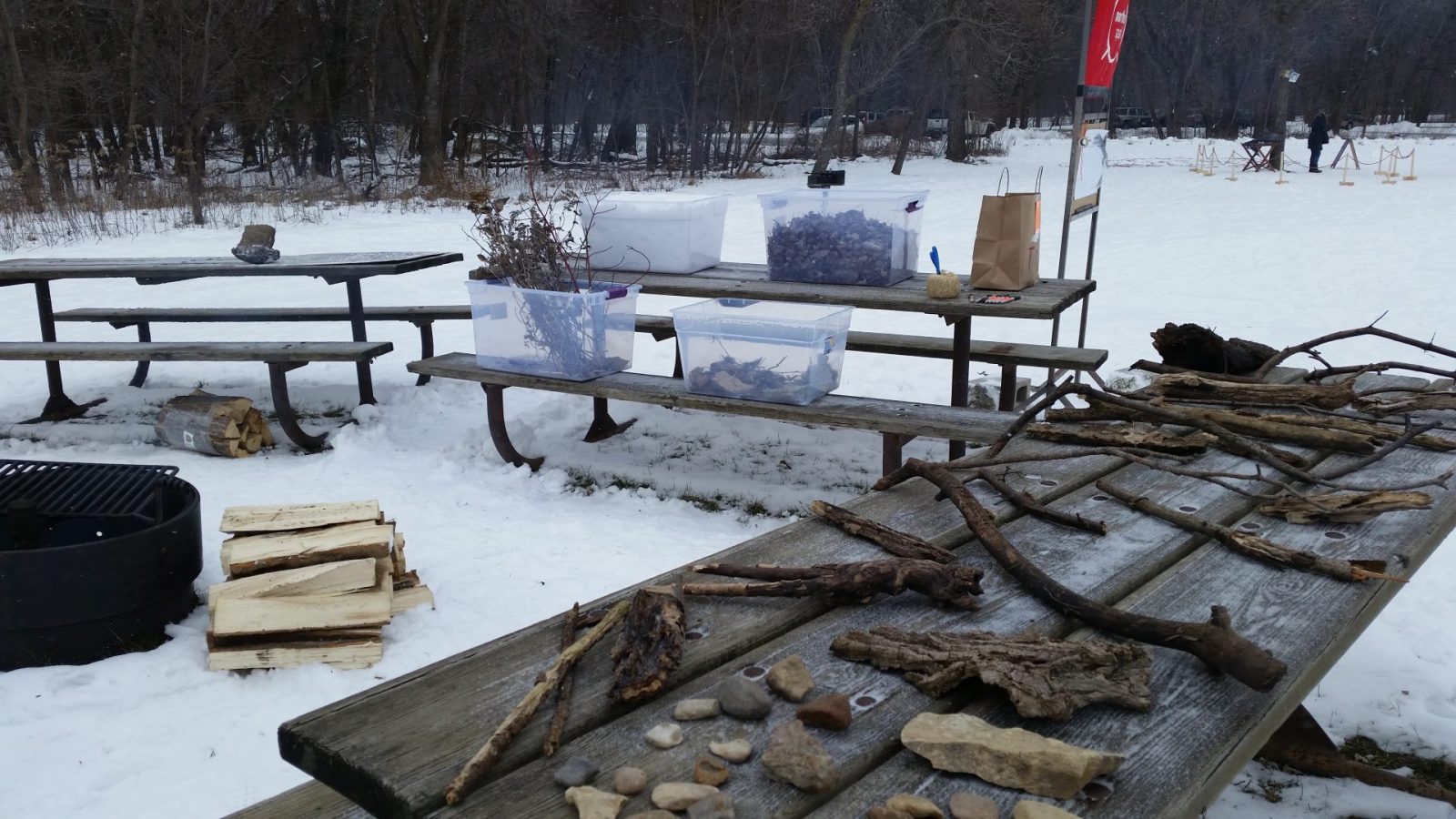
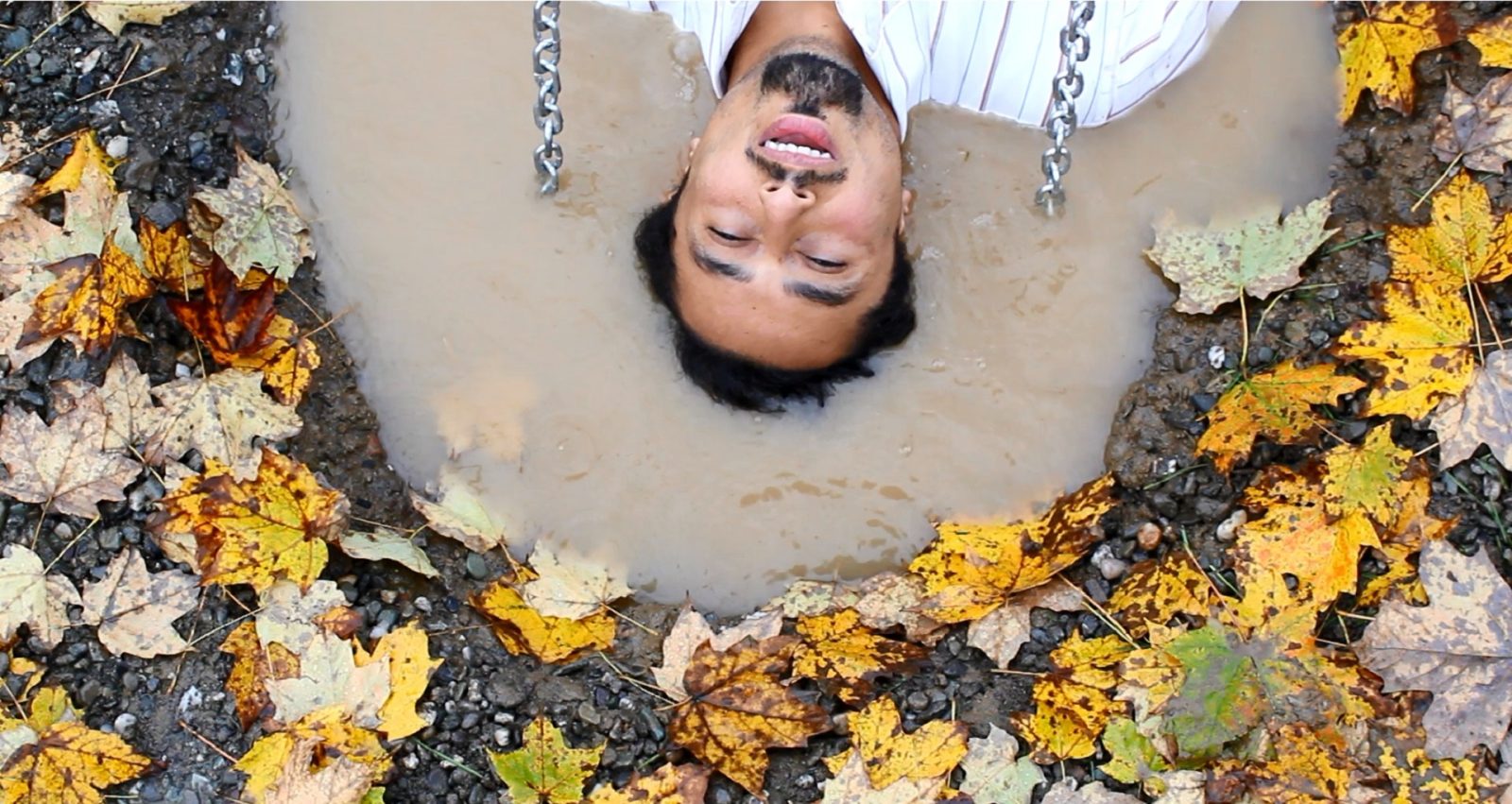
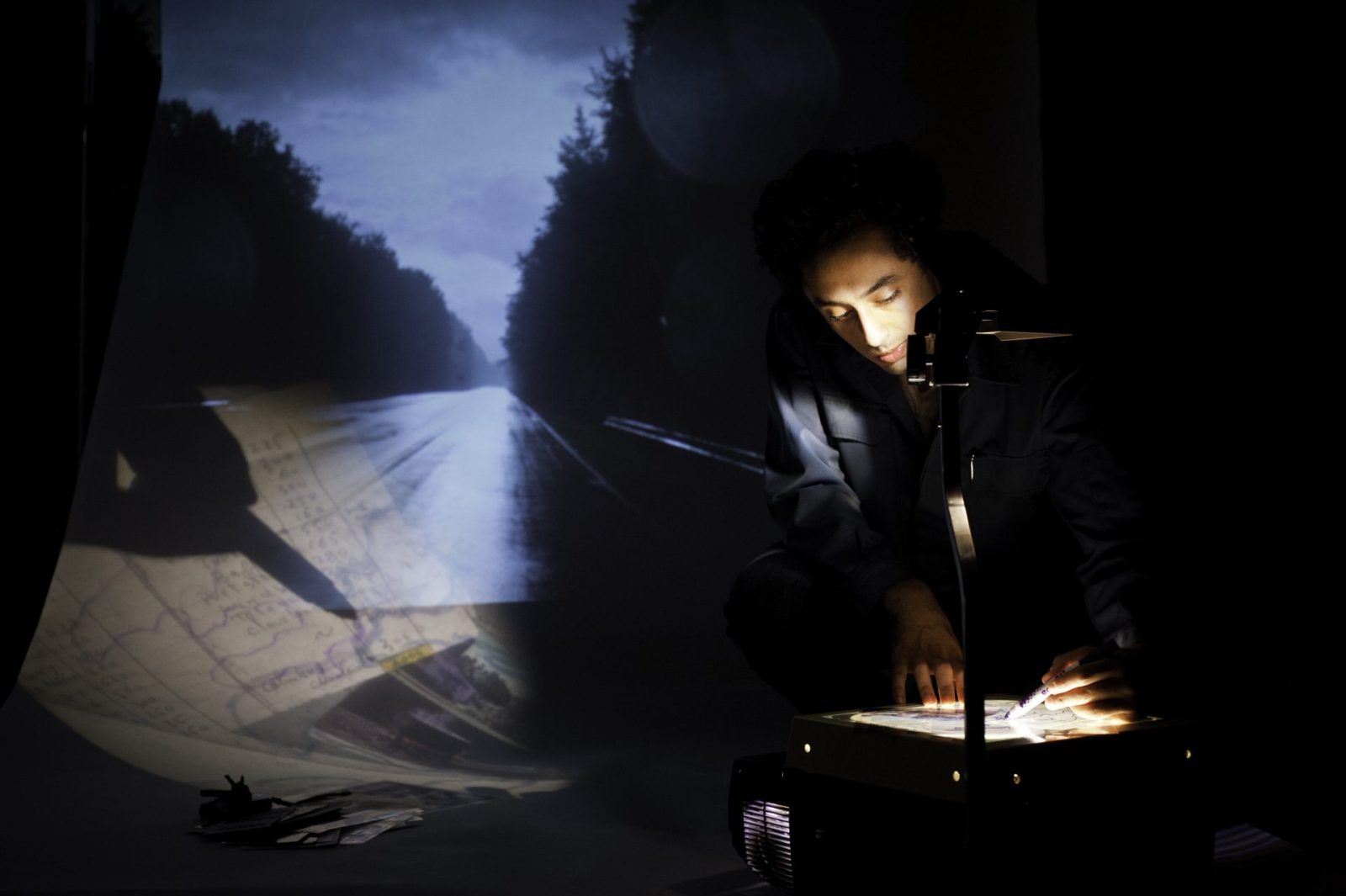
Moheb Soliman
Biography
Moheb Soliman is an interdisciplinary poet from Egypt and the Midwest who has presented work at literary, art, and public spaces around North America and abroad with support from diverse institutions. His debut poetry collection HOMES was a finalist for several awards and explores nature, modernity, identity, belonging, and sublimity through the site of the Great Lakes bioregion/borderland. He lives in Minneapolis in the Dakota and Anishinaabe homelands of Minnesota where he was program director for the Arab American arts organization Mizna before receiving a multi-year Tulsa Artist Fellowship and recently a Milkweed Editions fellowship.
Artist Statement
I consider myself an interdisciplinary poet, working with language in performance, installation, and video projects, often in site-specific ways in art and public spaces, sometimes using social practice and other relational methods. For more than a decade, I've returned to themes of nature, modernity, identity, and belonging through the site of the Great Lakes region. As a child immigrant from Egypt to the Midwest who’s lived on both sides of the border, issues of place, home, and otherness have been deep preoccupations for me. My work takes up the concept of the non-human living word both as an intimate axis for identity like race or gender, yet also as a "supreme other" for which we're always reaching and projecting onto. It takes up in critical and creative ways the nature/culture dichotomy and the tensions of environmentalism and identity politics in shaping contemporary life. The Great Lakes are an unparalleled site for exploring the above as hyper-industrialized yet sublimely wild; brutally colonized but incredibly diverse; the world’s largest watershed, and also borderland. My projects engage these issues through an insider-outsider experience, shared by many around the region and beyond.
Proposal
This is a performance art project, and an existential one. A deculturization project; a naturalization project beyond nation-state terms. This is symbolic, speculative, sublime (scientific sense).
I will go to Rabbit Island and return as the artist formerly known as Arab American. I desire to shed this troubled identity on behalf of all who find race, if reclamatory and celebratory, also limiting and poor. It’s too much all these years, tossed between spectral ends of mass prejudice and peer pressure, vigilance and burden. We need an out. Both raced bodies and a post-racial world are problematic—let me guinea-pig the latter, settle new space in-between.
Through daily protocols of embodiment, poetry, audio and video, and other site-specific methods, I aspire to re-orient to the trans-human living sphere. To cease being marginal, foreign species, transplant, and become an American; or no, a North American; no—GREAT-LAKESAN—a whole bioregional being, non-native yet non-invasive non-taxonomized member of a heterogeneous place-based community.
Somewhere between Donna Haraway’s cyborg ecofeminism, Joseph Beuy’s performance I Like America and America Likes Me, and the fathoming pangs of Egyptian singer Umm Kalthum, I will make brief life and art shucking this body and inhabiting the creaturely. I don’t know what I’ll become; I know what I seek to transcend. I feel others like and unlike me will find the process equally illuminating, challenging, liberating, impossible.

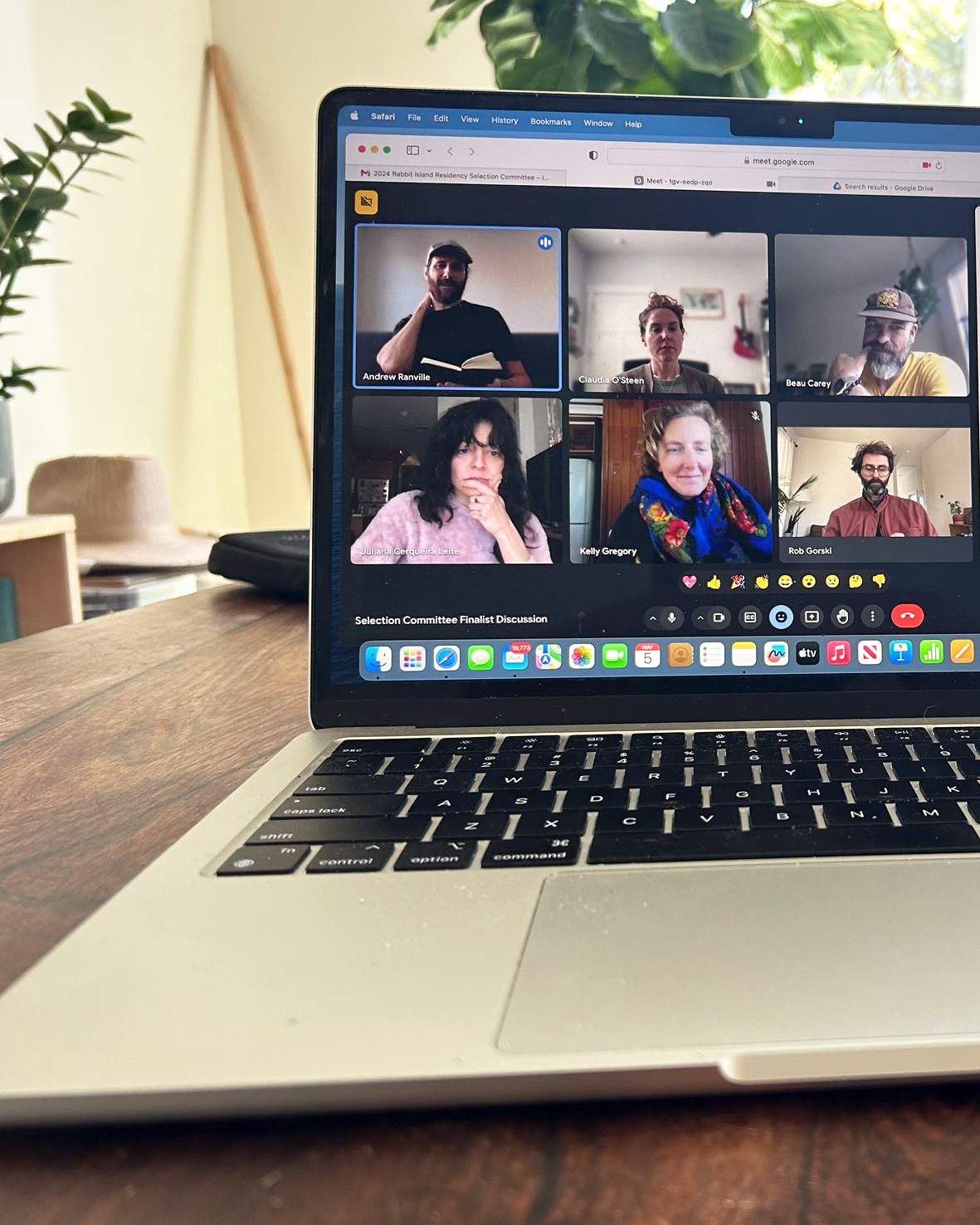
About the Rabbit Island 2024 Residency Selection Process
Following the application deadline all 313 applications were made available for review to the seven member Selection Committee. All members were invited to make notes and to provide feedback as the first round of the review process began. From April 16 – 25, 2025, four members of the committee took the lead in reviewing all 313 applications in detail. Together they read each artist statement and proposal; reviewed the work samples; and visited the links provided in each submission. At the end of this first round of review, an initial shortlist of 43 exemplary applications was created.
These 43 shortlisted applications were compiled into a new folder for the Selection Committee to review in detail. From April 25 – 29, 2024, members of the committee independently reviewed the initial shortlist and selected the 10 applications they felt were the strongest, with the opportunity to add any application from the total pool of 313 that they thought needed a closer look. On the evening of April 29, the seven member committee met via videoconference and deliberated for several hours to reach a finalist list of 10 applications.
Finalists were interviewed on May 3 – 4, 2024. After the interview process and brief discussion, the Selection Committee felt strongly in favor of many of the finalists applications and scheduled an additional day of deliberations. The committee met via videoconference on May 5, 2024, and discussed individual Finalists at length. After submitting ranked-choice votes and discussing the results, the committee ultimately awarded three residencies for the 2024 program season. These residents will be announced in the second week of May.
Rabbit Island 2024 Residency Selection Committee
Beau Carey, 2015 Resident, Artist
Claudia O'Steen, 2021–22 Resident, Artist
Juliana Cerqueira Leite, 2020 Visitor, Artist
Kelly Gregory, 2016 Resident, Architect/Artist
Lucía Hinojosa Gaxiola, 2021–22 Resident, Artist
Rob Gorski, Cofounder/President
Andrew Ranville, Cofounder/Director, Artist
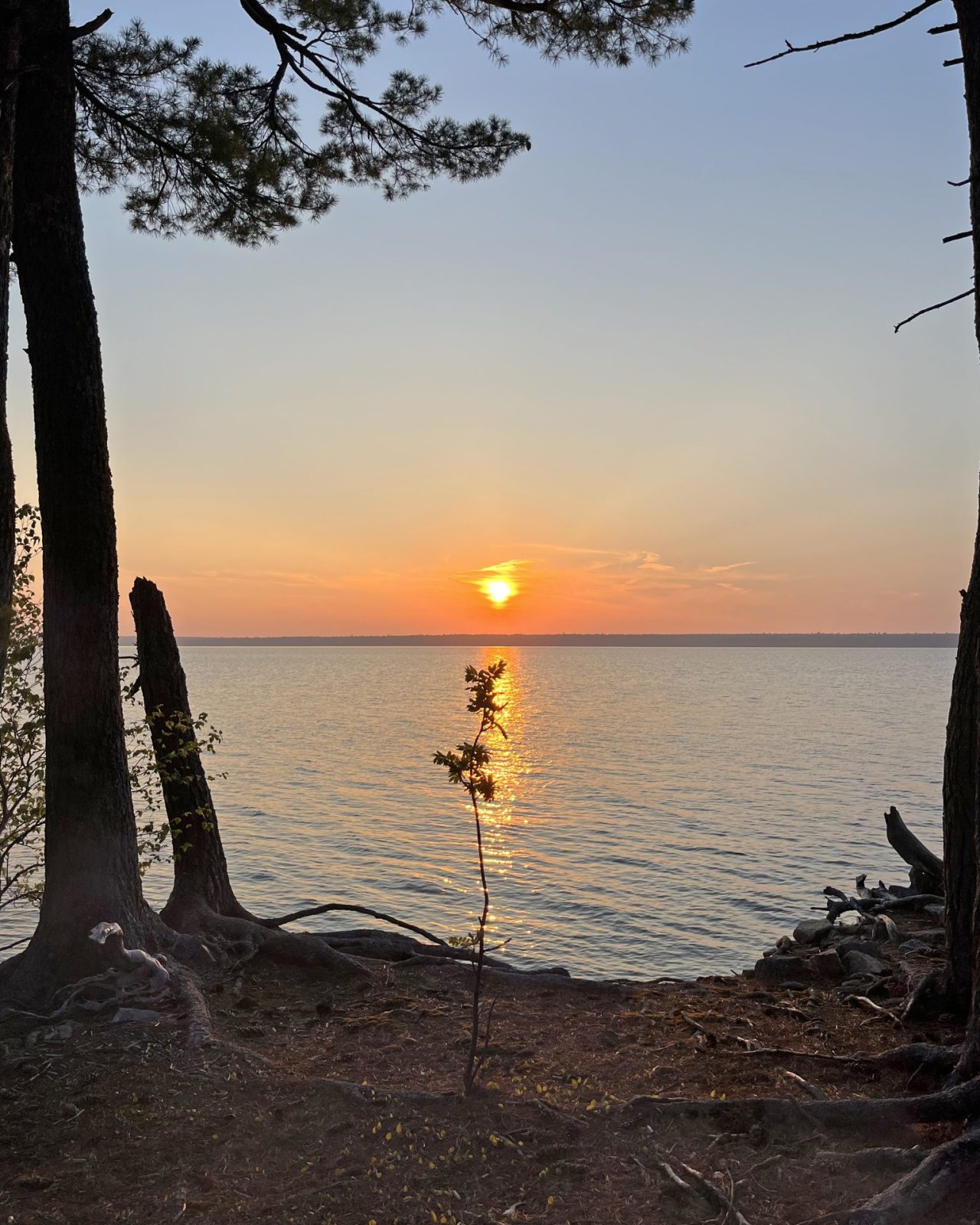
The 2024 Rabbit Island Residency Call for Applications is now closed. This year we received 313 applications. Thank you to everyone who spent time crafting their statements, proposals, and submitting work samples. Over the coming weeks the Selection Committee will review applications, narrowing the submissions down to a shortlist and then a finalists list. All applicants will be notified at the end of April and finalists will be interviewed. Awarded residencies will be announced in early May.
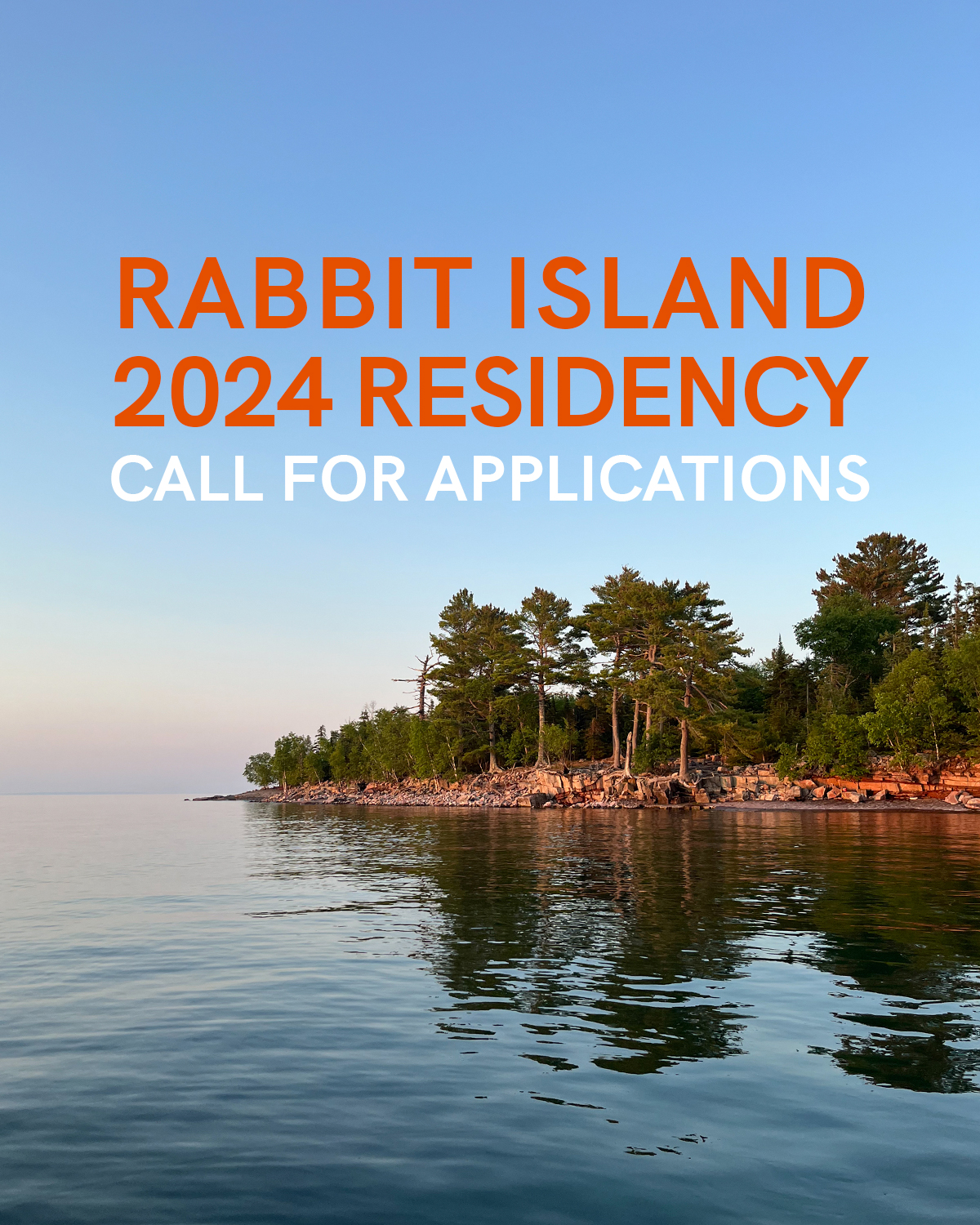
The 2024 Rabbit Island Residency Program is now accepting applications. This year we anticipate awarding three residencies that will take place between June and September. With the support of the National Endowment for the Arts and continued contributions from donors we are excited to support awarded residencies with the following:
- $3,300 (USD) unrestricted honorarium
- 3 week residency on Rabbit Island
- Exhibition in the annual Rabbit Island publication and online archive
- Connections to partner institutions for exhibition and performance opportunities
- Mainland housing as needed in the Keweenaw Peninsula, Michigan
A comprehensive Application Guide, Frequently Asked Questions, and application form are available at the Artist Residency page.
The deadline for application is April 14, 2024, at 11:59pm EDT.
We look forward to your submissions!
Congratulations 2023 Residents
We are excited to announce awarded residencies for the Rabbit Island 2023 Residency program. Three residencies have been awarded featuring a total of six artists. Each residency is supported by an unrestricted honoraria of $3,000 USD made possible by grant support from the National Endowment for the Arts. The awarded residents are:
Alchemyverse (Yixuan Shao, Bicheng Liang, and Ziqi Xu)
Victoria Manganiello
Distant Realities (Marine Lemarié and Nicolas Stephan)
Below are short biographies and artist statements of each awarded resident, in addition to their proposals. While we acknowledge that each resident's ideas may evolve while living and working on the island, we share these in the spirit of curiosity, transparency, and to provide insight into the quality, critical nature, and ambition of the proposals we receive. We look forward to sharing the residents' research and work as we move forward through this program season, and beyond.
Since 2011 the program has supported 39 awarded residents and hosted over 80 collaborators. The experiences have resulted in artwork, writing, compositions, performances, and more that critically engage issues of conservation, culture, and how we interact with—and advocate for—natural spaces. As society continues to face these contemporary challenges we are excited to have Rabbit Island’s residents contribute to this ongoing dialogue.
The committee extends a sincere thank you to all who applied to the Rabbit Island 2023 Residency program. While we regret not being able to offer more residency positions, it is an honor to be working with the following artists.
Rabbit Island 2023 Residency Selection Committee
Duy Hoàng, 2018 Resident
Christie Neptune, Artist
Aly Ogasian, 2021–22 Resident
Jessica Segall, Artist
Jessica Shaefer, Curator
Rob Gorski, Cofounder/President
Andrew Ranville, Cofounder/Director
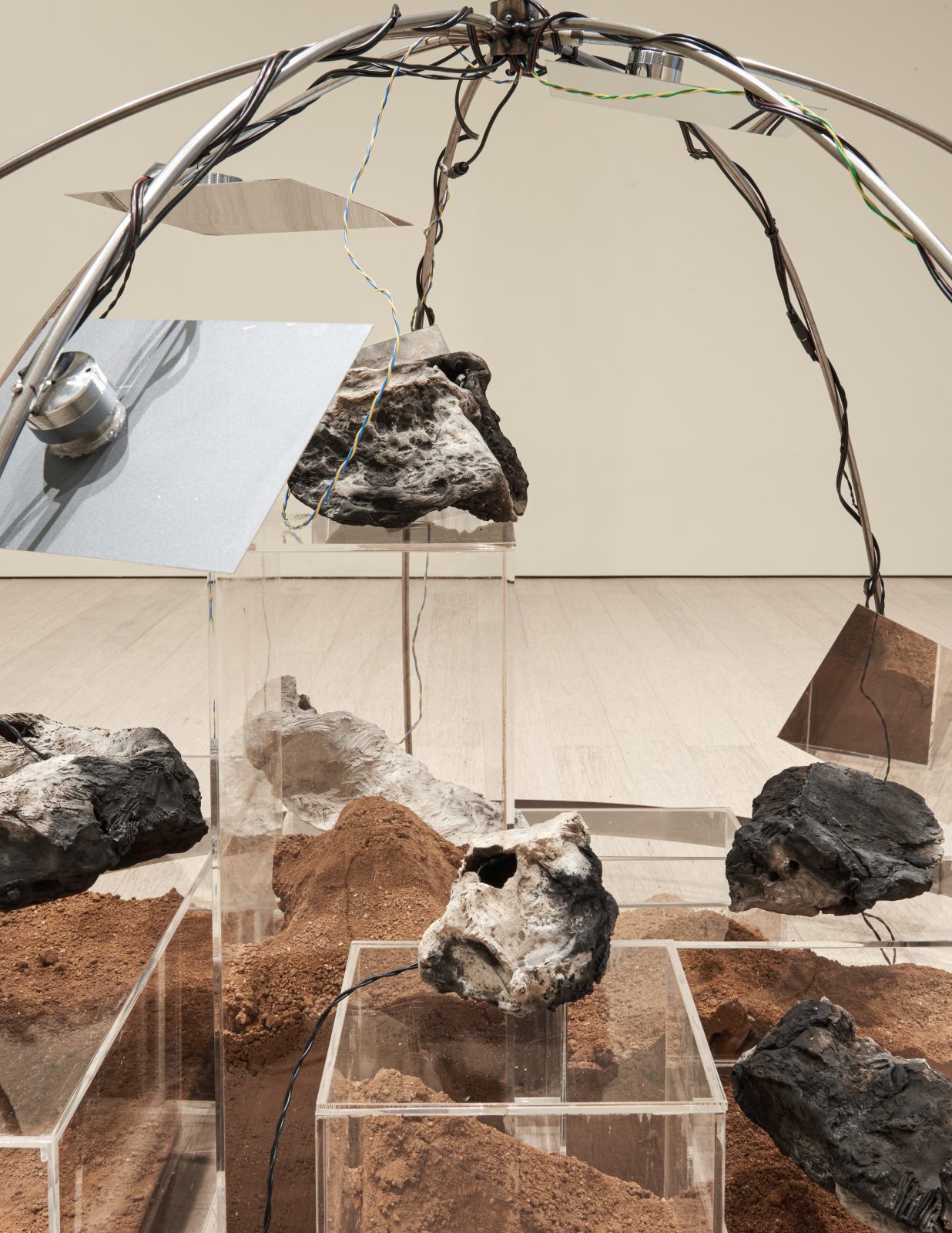
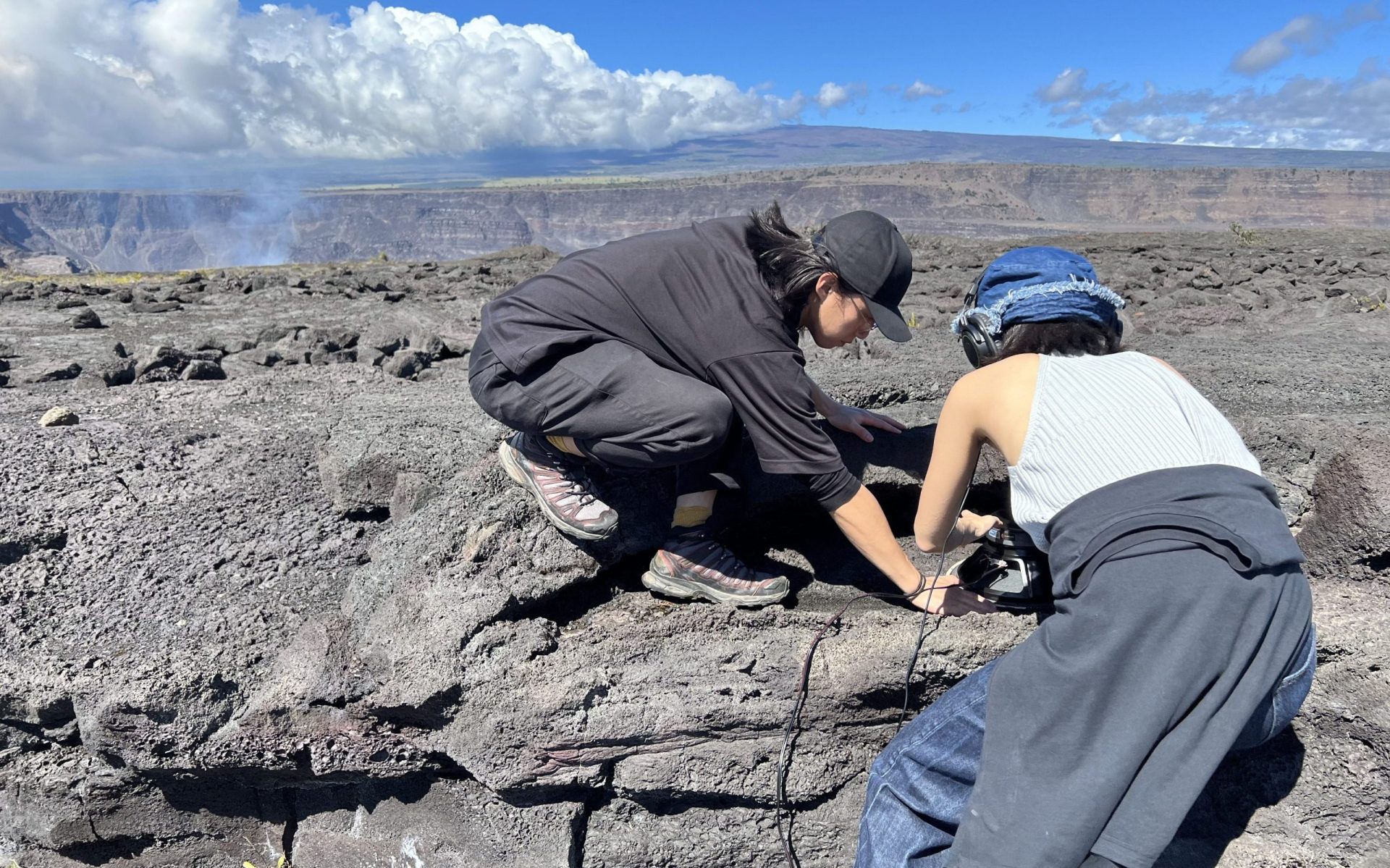
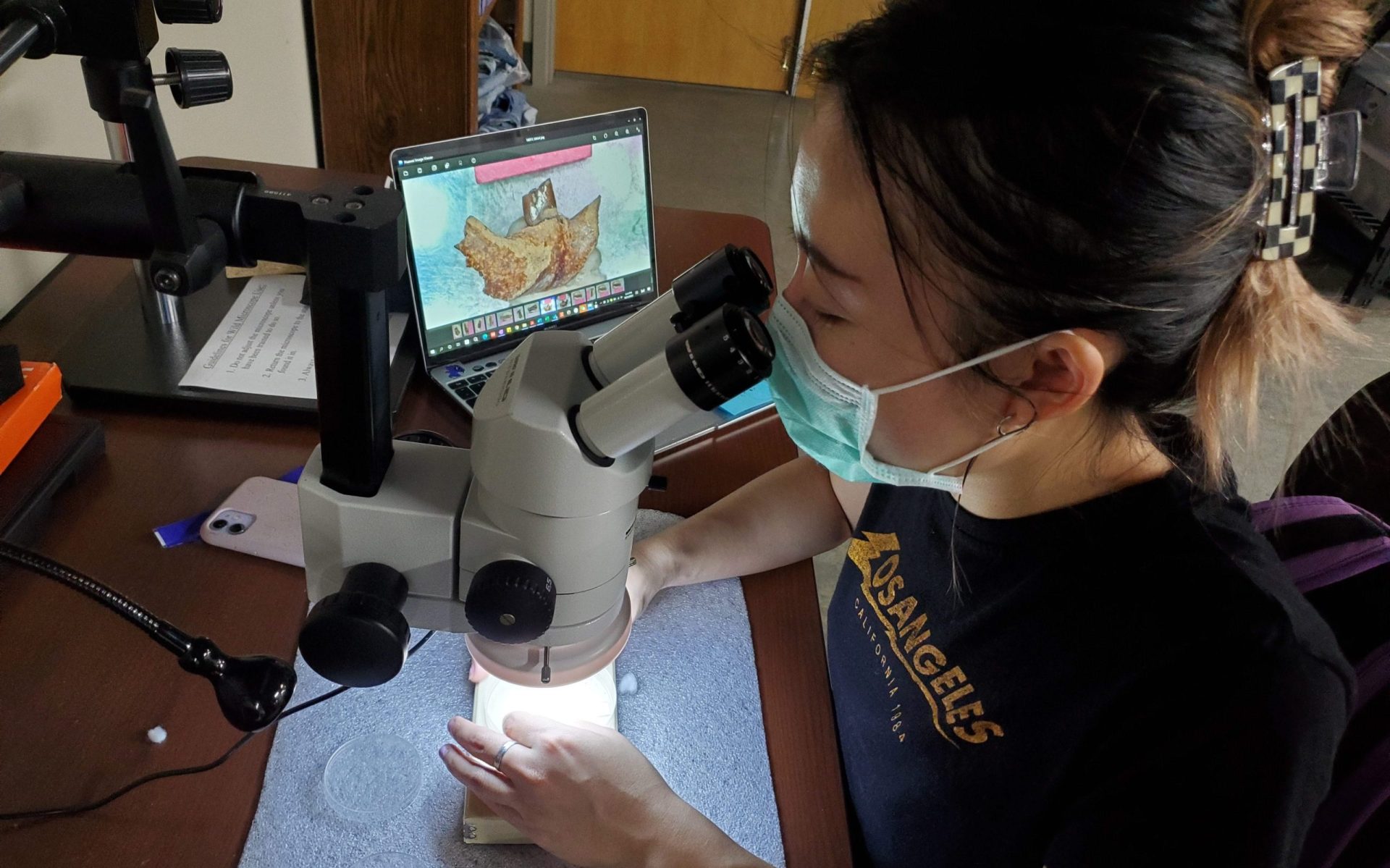
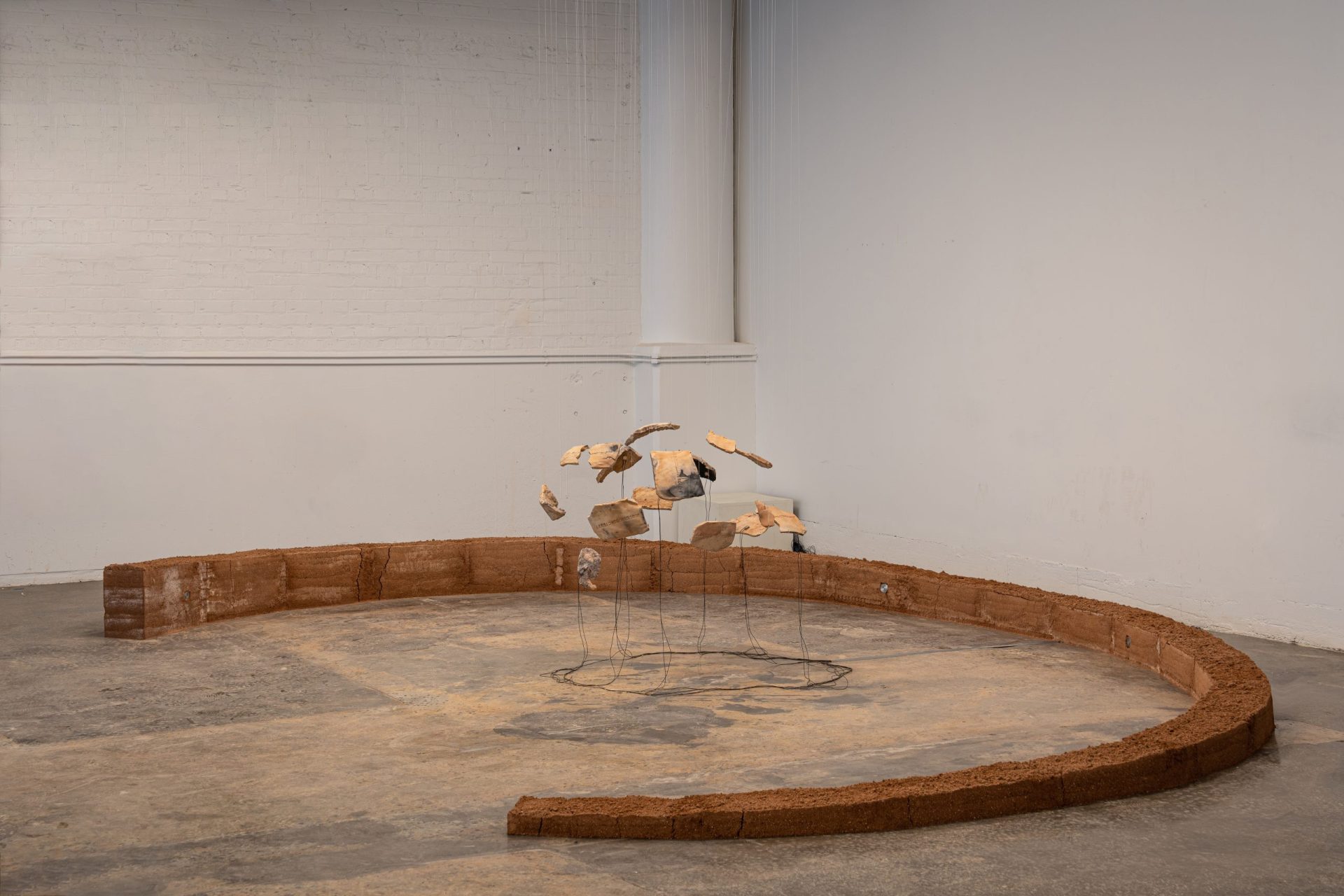
Alchemyverse (Yixuan Shao, Bicheng Liang, and Ziqi Xu)
Biographies
Based in New York, Bicheng Liang and Yixuan Shao have been collaborating as a transdisciplinary duo, Alchemyverse, since 2020. Combining craft and research through their respective backgrounds in visual arts and sound studies, the duo’s field-based practice has taken them to places such as Oahu and Moa Kea, Hawaii, the American Southwest, the Hudson Highlands, and the Atacama desert. Alchemyverse has exhibited at the Sotheby’s Institute of Art (NY), School of Visual Arts (NY), Wallach Art Gallery (NY), Catherine Fosnot Art Gallery and Center (CT), LeRoy Neiman Gallery (NY), and the Bishop Museum (HI). Their artist research was presented at the IRCAM forum at New York University. Currently, they are an artist-in-residence at the International Studio & Curatorial Program in Brooklyn, New York.
Ziqi Xu is a paleontologist and theatre designer from Shenzhen, China, currently based in Johnson City, Tennessee. She holds bachelor's degrees in geology and theatre design from the University of Washington and is now pursuing her passion for paleontology at East Tennessee State University. Xu has designed lighting for a diverse range of theatrical works, including traditional Shakespearean plays, modern Chinese comedy, and an improv show adapted from children's television classics. She has also gained field experience in Montana for her geological and paleontological studies. Currently, Xu's research focuses on understanding the rodent community in the Appalachian region about 5 million years ago.
Artist Statement
Our collaboration combines our respective backgrounds in visual art, sound studies, geology and paleontology and investigates the ways in which art and science communicate. We are fascinated by the challenge of locating ourselves within the vastness of geologic time and the ways in which our human experiences are intertwined with the earth's cycles of growth and decay. Reflecting on environmental issues and human dislocation of space, we build sensory channels between the personal, the human, and the metaphorical with the othered, the terrestrial, and the scientific.
Our process begins as an intimate and private journey and evolves into a more holistic approach incorporating scientific research and crafting in situ. Using electricity, magnetism, and sound to activate images, forms, and found objects, we create visual and aural assemblages using materials both foraged from nature and from our daily surroundings. By working in situ in places undergoing transformative yet under-recognized forces, our collaboration proposes an alternative mode of relations, one that does not consider Landscape as a static subject but as an active agent representing the constant flux between human and natural histories.
Proposal
As a team of artists and researchers from diverse backgrounds, we would like to explore the question of how time on Rabbit Island moves on a different scale from the one we experience in our daily lives. We are drawn to the ways in which geologic traces are preserved and changed by the island's ecosystem. By studying, documenting, and recording the biota of Rabbit Island as well as our interactions with it, we hope to uncover memories of non-anthropocentric records of time.
We view geology as a subject that studies both relics and contemporary material evidence to speculate and construct narratives about the history of our surroundings. By approaching Rabbit Island as a parallel universe, an alternative shelter that enables us to view our world from a different perspective, we hope to gain a new understanding of our place within the earth’s cycle. Through activities such as sound recording, 3D scanning and photogrammetry, drawing, and documenting our encounters and studies of the island's geology and ecology — from the Jacobsville sandstone to the red-back vole — we will be working to gain insights into our role as artists, humans, and coexisting entities in relation to the island.
Our interdisciplinary approach, combining visual art, sound studies, and scientific research, offers a unique perspective on the natural world. Through our activities on Rabbit Island, we aim to provide a window through which we can understand where humanity stands in the vastness of the time of the earth.
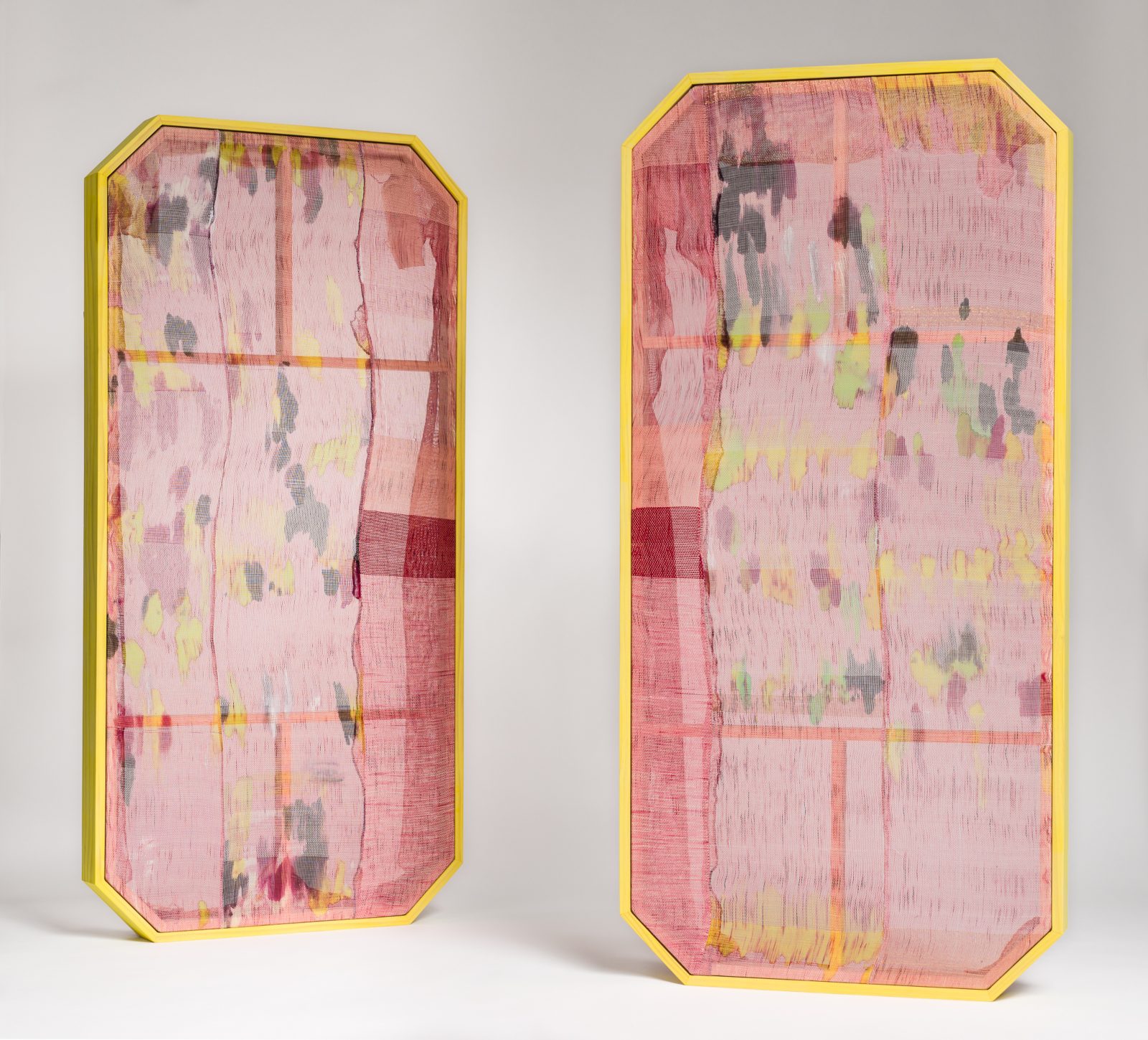

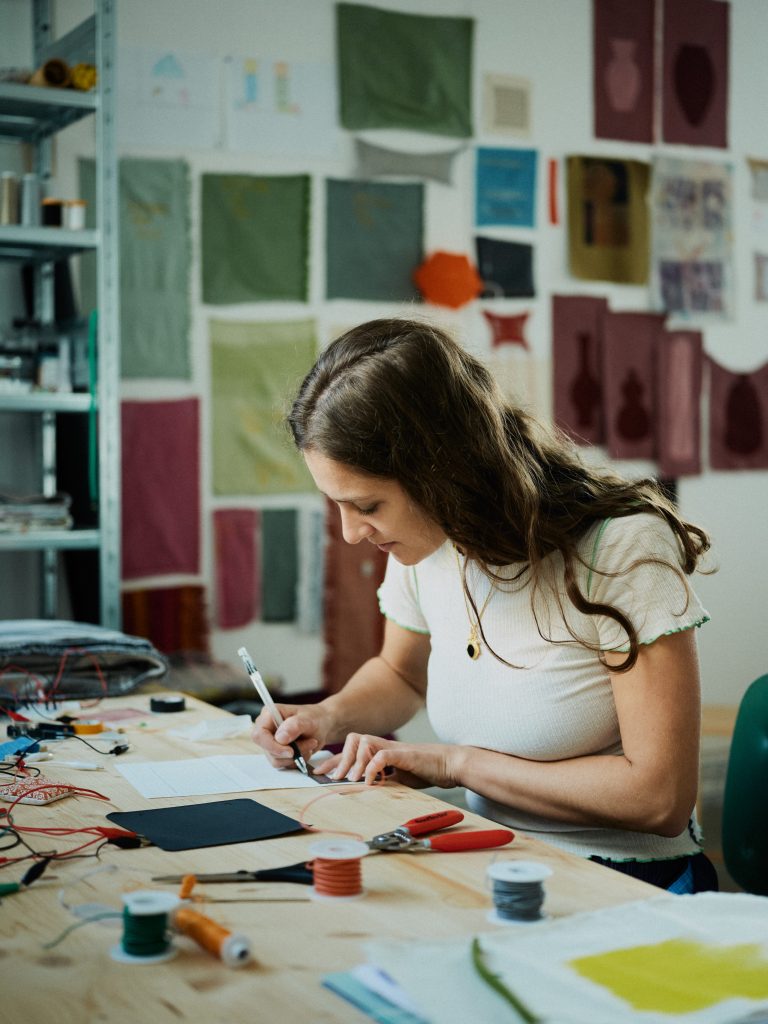

Victoria Manganiello
Biography
Victoria Manganiello is an artist, designer, organizer, and educator. Her work has been included in Hyperallergic, The New York Times, Boulin ArtInfo, Forbes, and Architectural Digest, among others. Victoria has received multiple international, recognized grants, awards, commissions, and residency appointments including from Wave Farm, S&R Foundation, Forbes, Center for Craft, The Wallstreet Journal, and TaDa. She has exhibited her work internationally including across Europe, Taiwan, Australia, and throughout the USA including at the Tang Museum, Museum of Art and Design, Ars Electronica, BOZAR, Indianapolis Museum of Contemporary Art, and the Queens Museum. She is also a part-time associate professor at NYU and the New School and co-organizes an annual artist residency for e-textile practitioners. Victoria is well-known in the textile community as an accomplished artist and innovative storyteller and facilitates many socially engaged projects in collaboration with other artists, designers and educators.
Artist Statement
The structures I compose are studies of materials and our fundamental relationship to them. I use traditional textile-based media: I spin my own yarn, mix my own color dyes, and weave my own constructions. I integrate historical methods of color dye and yarn and textile construction alongside surprising technologies and modern alternatives like computer code and fiber reactive pigments. My recent projects incorporate materials from the seemingly extreme natural to the extreme synthetic and I make choices with density, color, and kinetics to demonstrate materiality and the depth of possibility in the natural world. I use abstraction which I derive from world geography and statistical mapping and my work takes the form of sculptural installation, wall hanging, performance, and socially engaged work. I am interested in using weaving as code and language and my work seeks to connect common materials like textiles to common behaviors like communication. Conceptually, my work is rooted in the history of technology and its connection to gender, food, and craft. I use the stories of the past with the mood of the present to create experiential artworks that speculate on the future.
Proposal
"Natural Synthetics" is an ongoing series of explorations taking the form of studies, woven paintings and immersive experiences which examine how our relationship with consumable materials mirrors social dynamics and current politics. Through both literal and figurative interpretations, I seek to (re)define what is considered "natural" or "synthetic" using a range of materials from analog to futuristic, digital, modern, and even intangible. During my time on the island, I will focus on material experiments and social research/reading within the structure and history of natural bath and vat dye. This dedicated time will allow me to deepen my understanding of pigment methodologies and explore its nuances and delicate procedures, especially in comparison to synthetic pigments and fibers. I intend to create a sample/guide book that responds to the local landscape to be shared with the community and future guests.

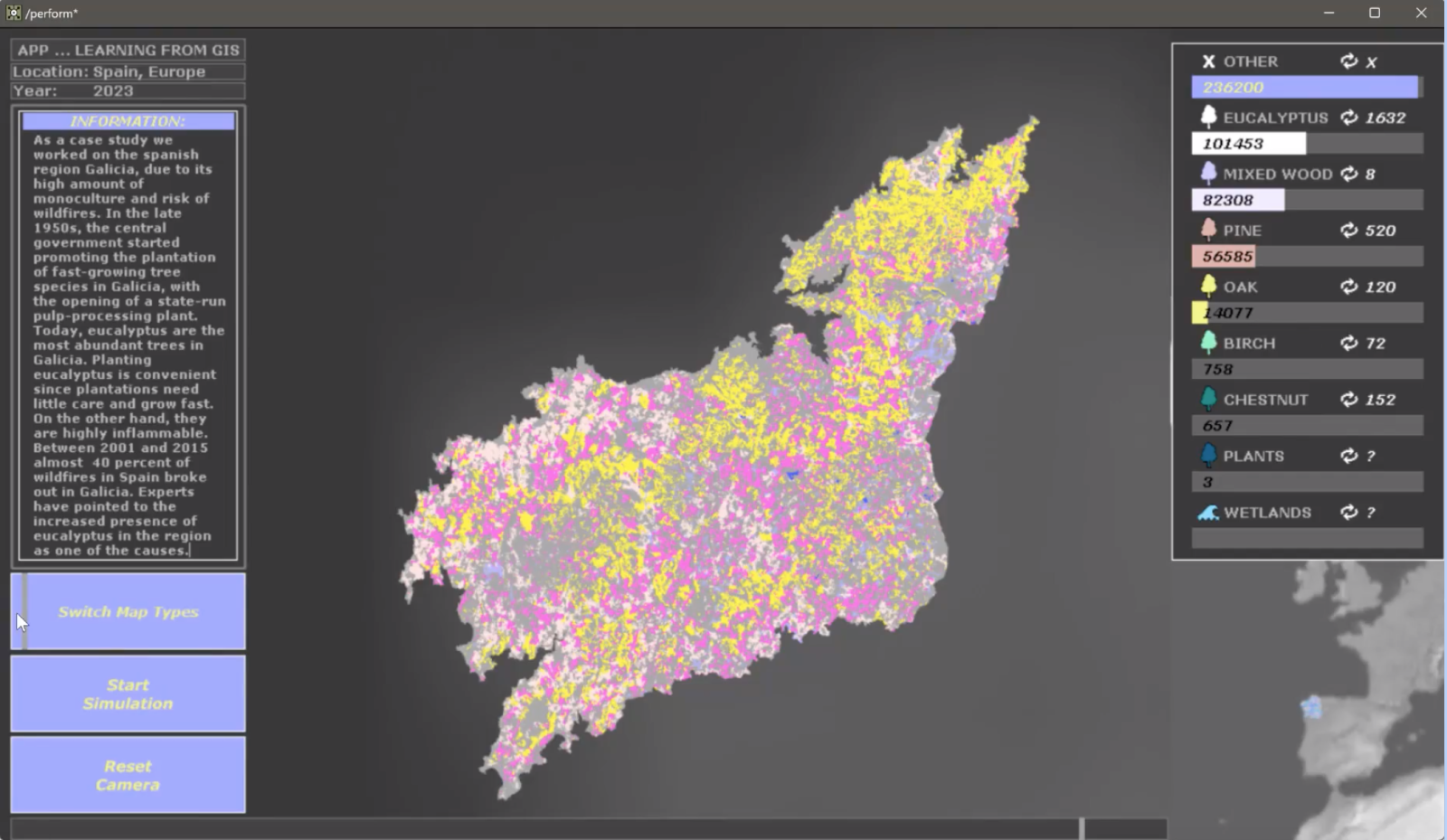
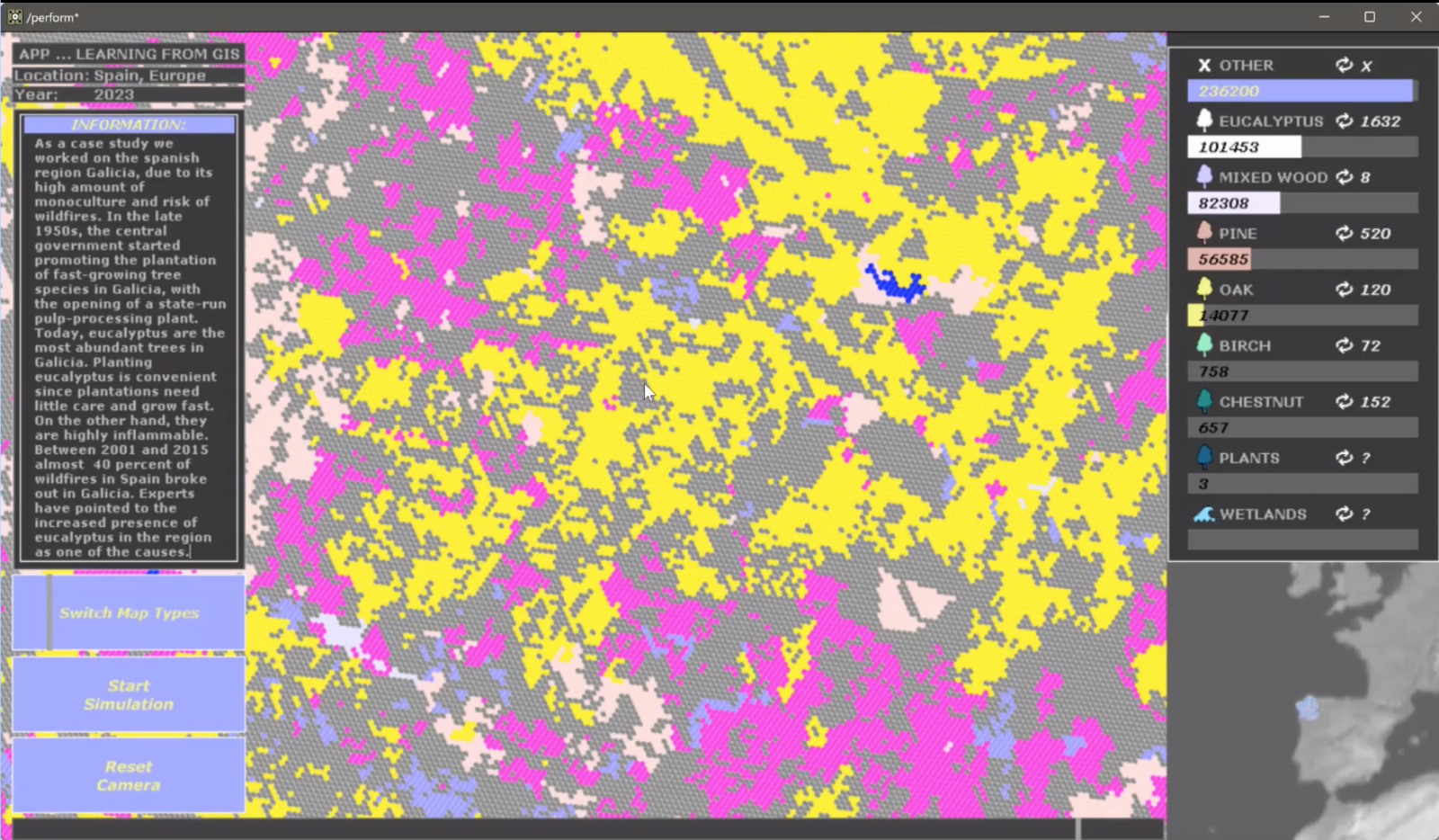
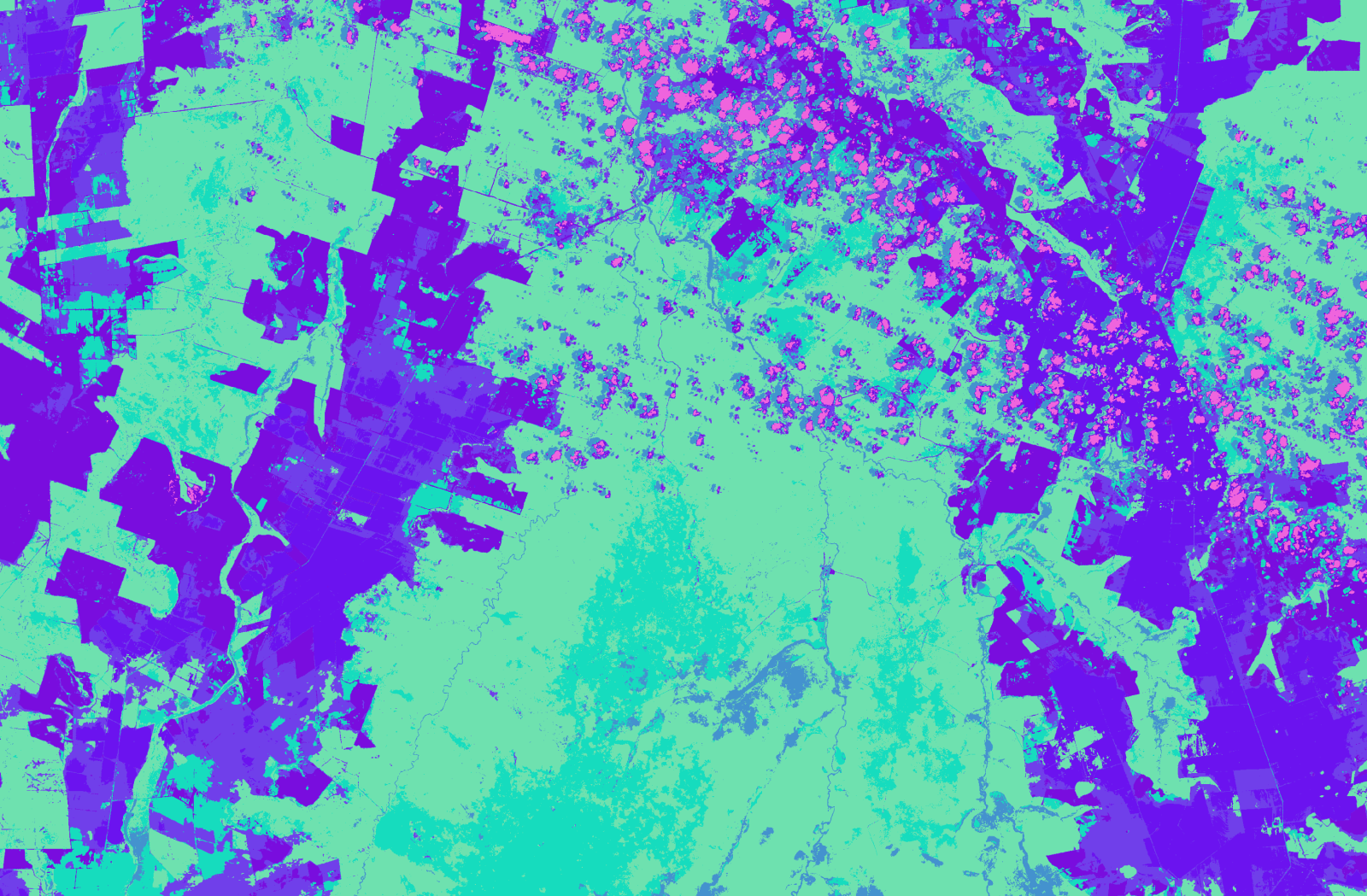
Distant Realities (Marine Lemarié and Nicolas Stephan)
Biography
Distant Realities is a Berlin-based geospatial design studio founded by Marine Lemarié and Nicolas Stephan. We create narratives based on existing planetary conditions in which unseen realities become visible in interactive maps and animated short films. Currently, we are working on a carbon accounting platform that aims to aid governments and communities in spatial decision-making related to natural carbon sinks and ecosystems and a short film playing in a fictional carbon capture and storage facility. Marine and Nicolas have participated in residencies and research programs at Medialab Matadero Madrid, SCI-Arc in Los Angeles, and The Terraforming at the Strelka Institute in Moscow. Distant Realities has exhibited in Austria, Los Angeles, and Barcelona and presented their work at architecture faculties worldwide, such as the University of Innsbruck, Beijing Institute of Fashion Technology, CAUP Tongji, VA[A]DS Tbilisi, and the University of Pennsylvania.
Artist Statement
Distant Realities uses research-based speculative design to address global and local crises related to ecology, politics, and technology. Their work encompasses various mediums, including video installations, theoretical research, and interactive platforms, and draws upon their background in urban theory, architecture, and speculative design.
Distant Realities understands design and architecture as a medium to unveil hidden realities and possible futures in an entangled world governed by intricate systems of rules and obligations. We do not consider our projects proposals, but scenarios, incorporating elements of the utopian as well as the dystopian. We merge the latest digital techniques with conceptual thoughts to create narratives in which unseen realities transform into visible ones.
We explore existing realities. We imagine future ones.
Proposal
The project reflects on Rabbit Island’s ecosystem by creating an interactive map. It aims to visualize the relationship between the island's plants, animals, soil, temperature, humidity, and other ecological factors and to simulate changes in these relationships caused by climate change and other anthropogenic disturbances. Due to its small surface area and naturally isolated territory, Rabbit Island provides a unique opportunity to do so, enabling the collection of data on the ground, which will be combined with satellite images to provide a comprehensive view of the ecosystem. The anticipated outcome is an interactive “fuzzy” map of the island consisting of several visual layers and simulations of possible future developments. The map is based on a geographic grid system developed by a major tech company and critically reflects on its own technology to address the abstraction of landscapes in the past and today. Utilizing a varied approach that incorporates not only a map, but also diagrams, imagery, written explanations, and on-site video recordings, we strive to comprehend the intricate interconnections that comprise the ecosystem of Rabbit Island, as well as its broader historical and geographical significance both within and beyond its immediate surroundings.
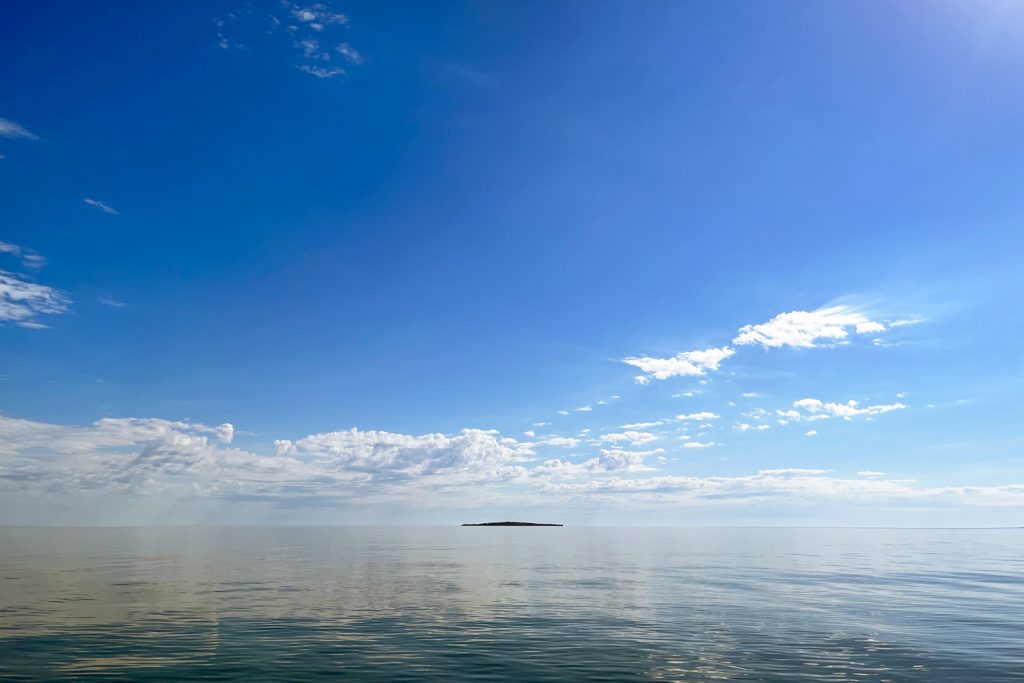
We are getting closer to our 2023 Residency season. Thank you to everyone who expressed interest in the Rabbit Island Residency program, and to applicants who took the time submitting work samples, artist statements, and crafting proposals. This year we received 310 applications from 24 countries from around the world. Over the past three weeks the Selection Committee has diligently reviewed every application. After multiple shortlisting stages and meetings narrowing down the applications, the committee has reached the final stage of review and deliberation. Notifications have been sent to all applicants. Finalists will be interviewed over the next week and awarded residencies will be announced in early May.
About the Selection Process
Following the application deadline all 310 applications were compiled into a review document for the seven member Selection Committee. All members were invited to review, make notes, and provide feedback as the first stage of the review process began. From April 2 – 13, 2023, four members of the Selection Committee reviewed all 310 applications in detail. Together they read each artist statement and proposal; reviewed the work samples; and visited the links provided in each submission. During the first videoconference, each of the four committee members guided a group discussion covering a quarter of the applications that they took the lead in reviewing during the first stage. At the end of this first review, an initial shortlist was created featuring 65 applications.
These 65 applications were compiled into a new document for the entire Selection Committee to review. From April 15 – 22, 2023, members of the committee independently reviewed the initial shortlist and selected the 10 applications they felt were the strongest, with the opportunity to add any application from the total pool of 310 that they thought needed a closer look. This process resulted in a second shortlist of 42 exemplary applications. On April 22, the seven member Selection Committee met via videoconference and deliberated for five hours to reach a finalist list of 8 applications. Finalists will be interviewed by the end of April. After the interview process, Selection Committee consensus and/or voting will result in three successful applications being awarded a Rabbit Island Residency for the 2023 program. The awarded residencies will be announced in early May.
